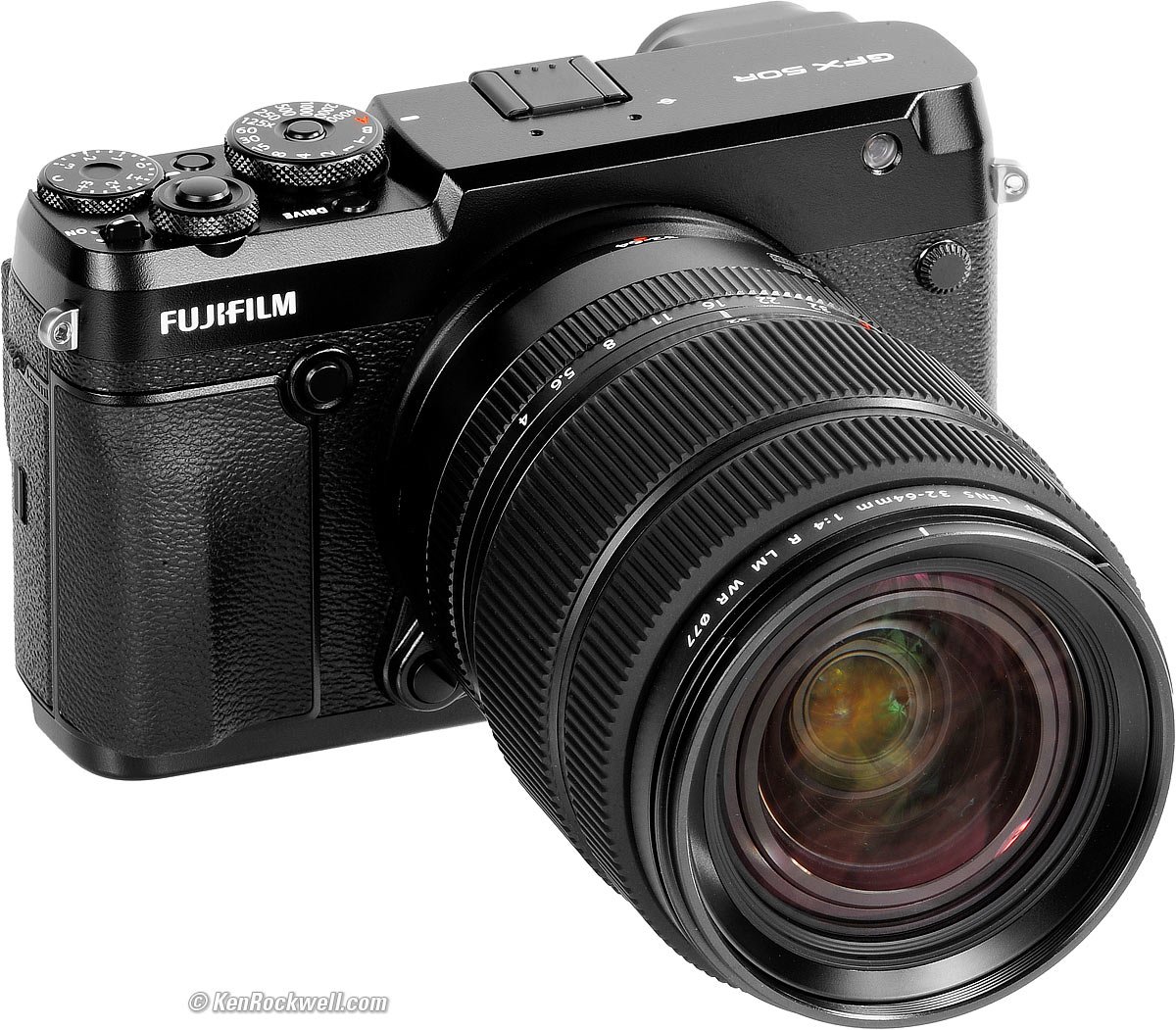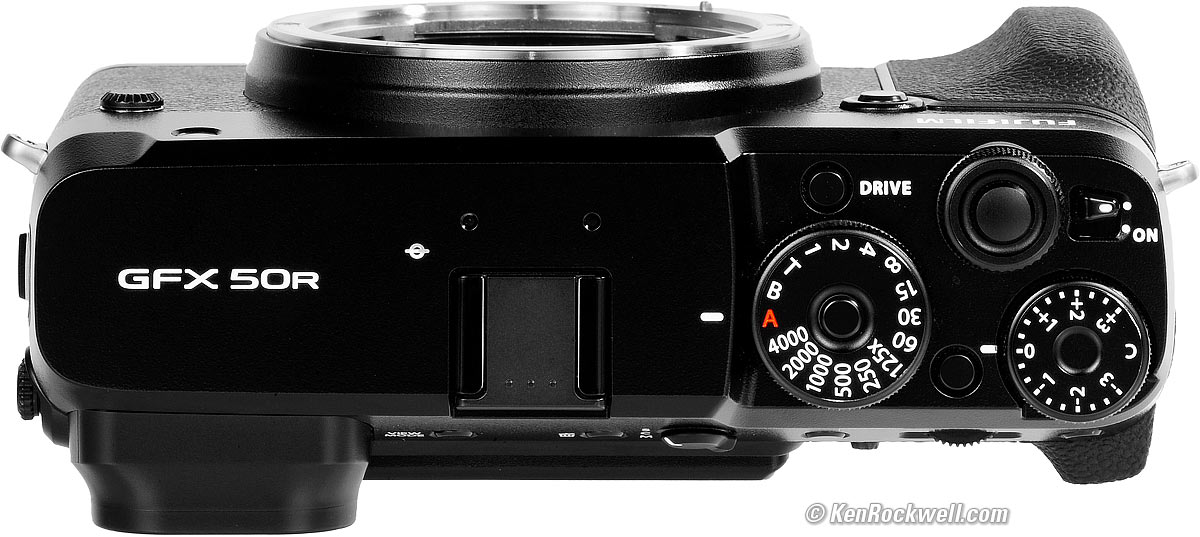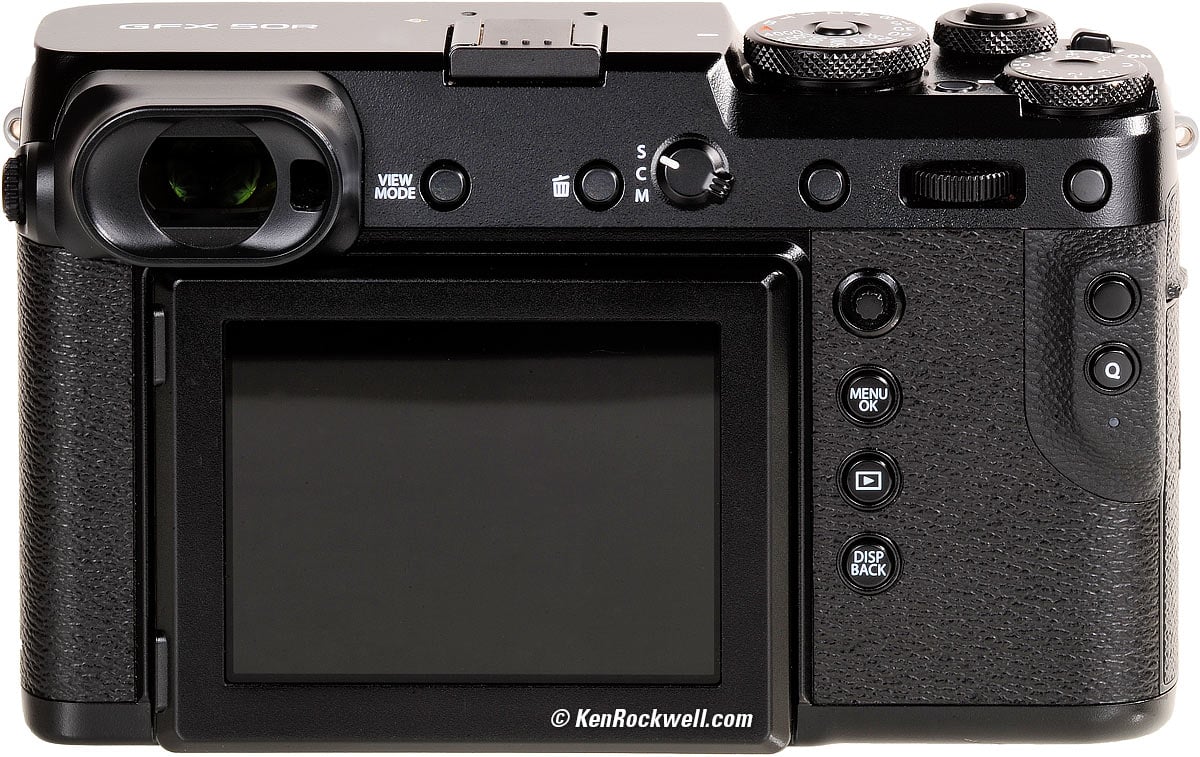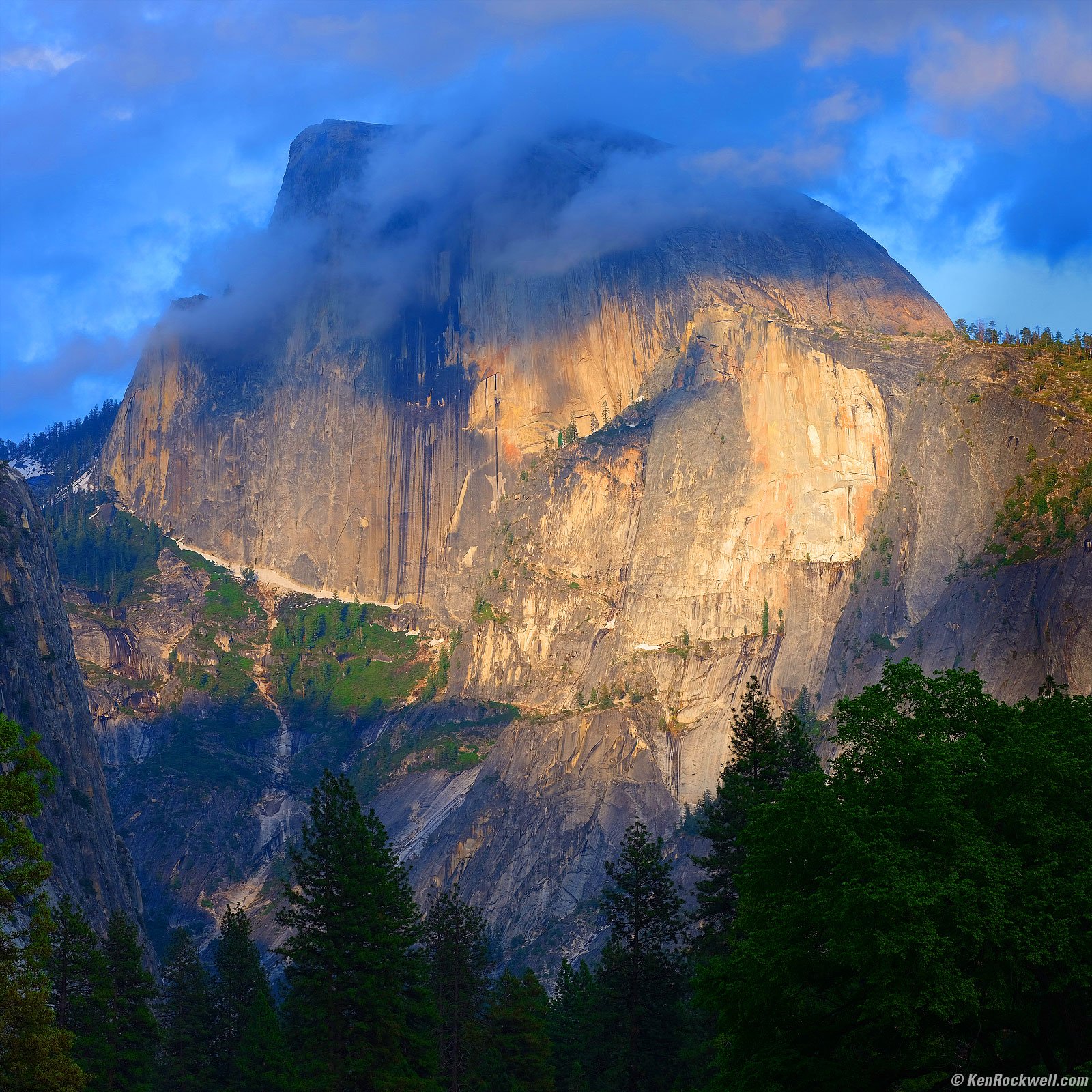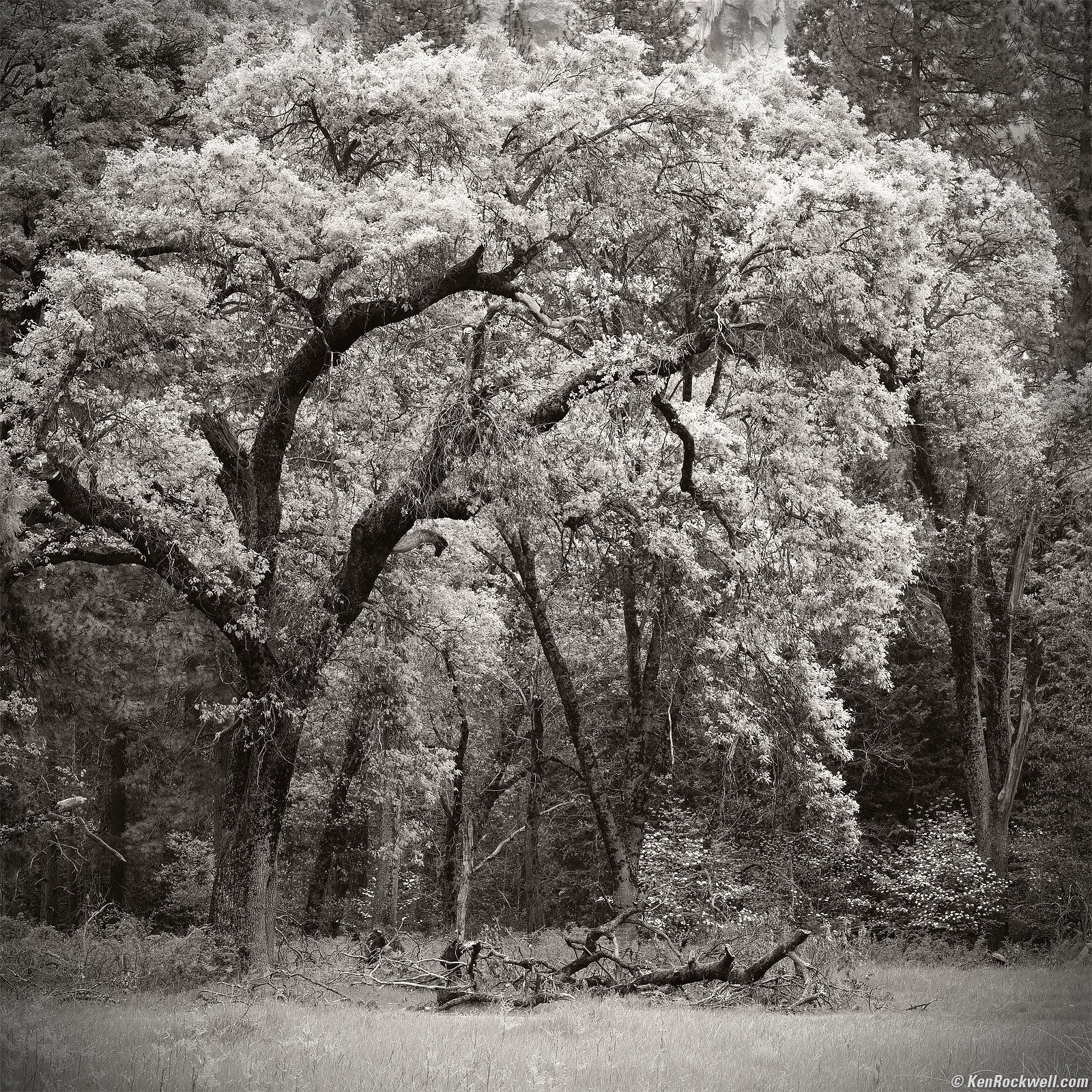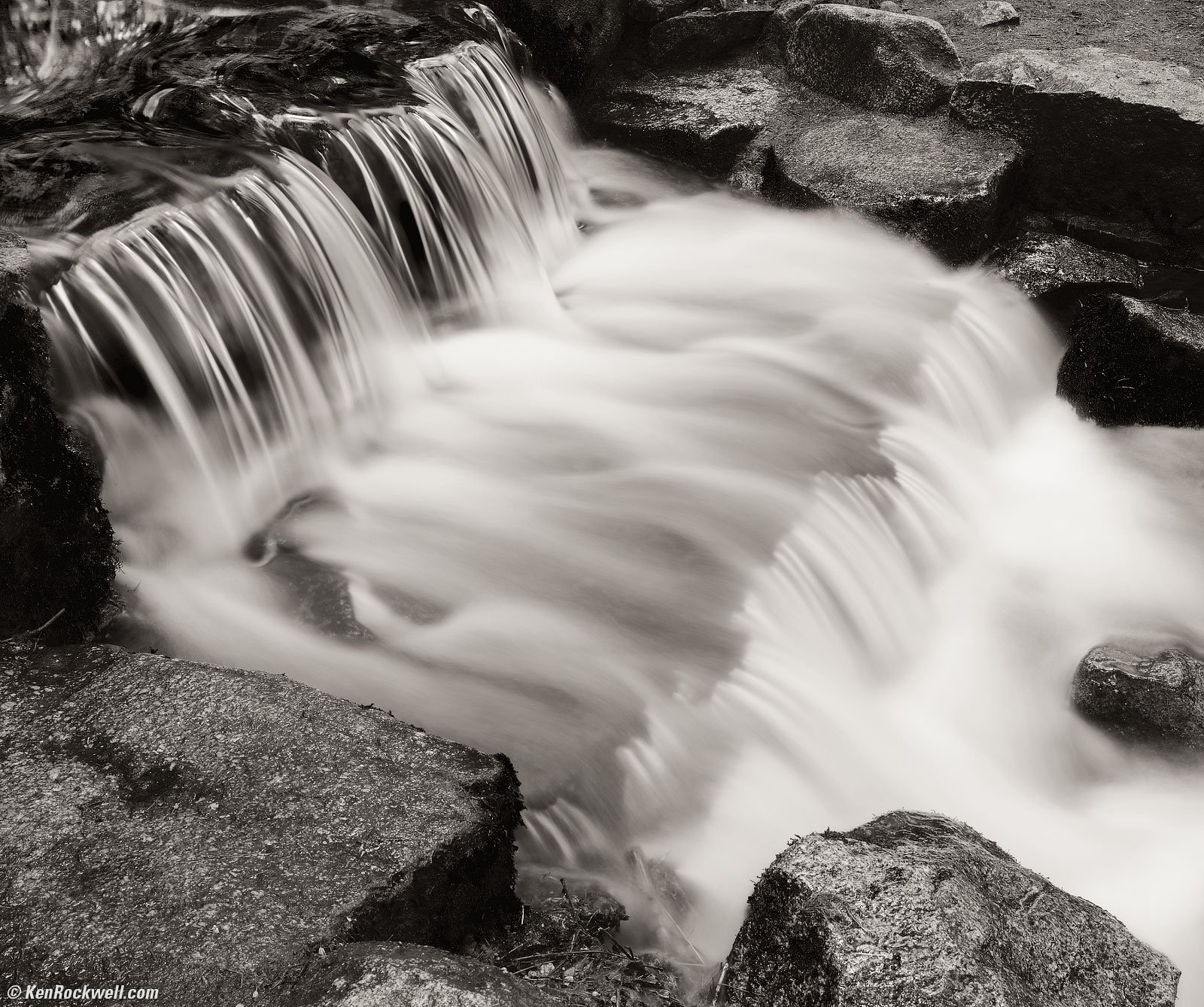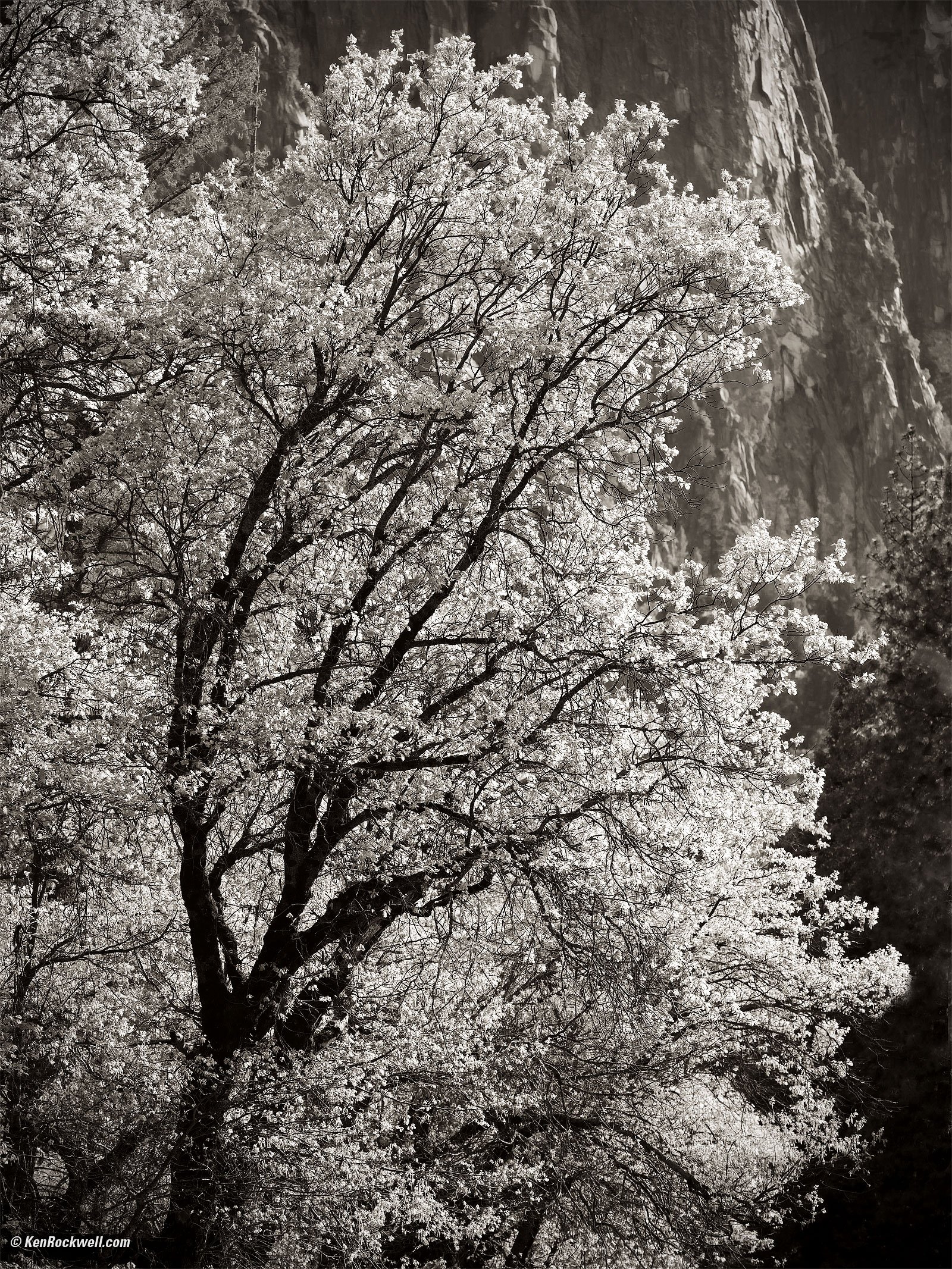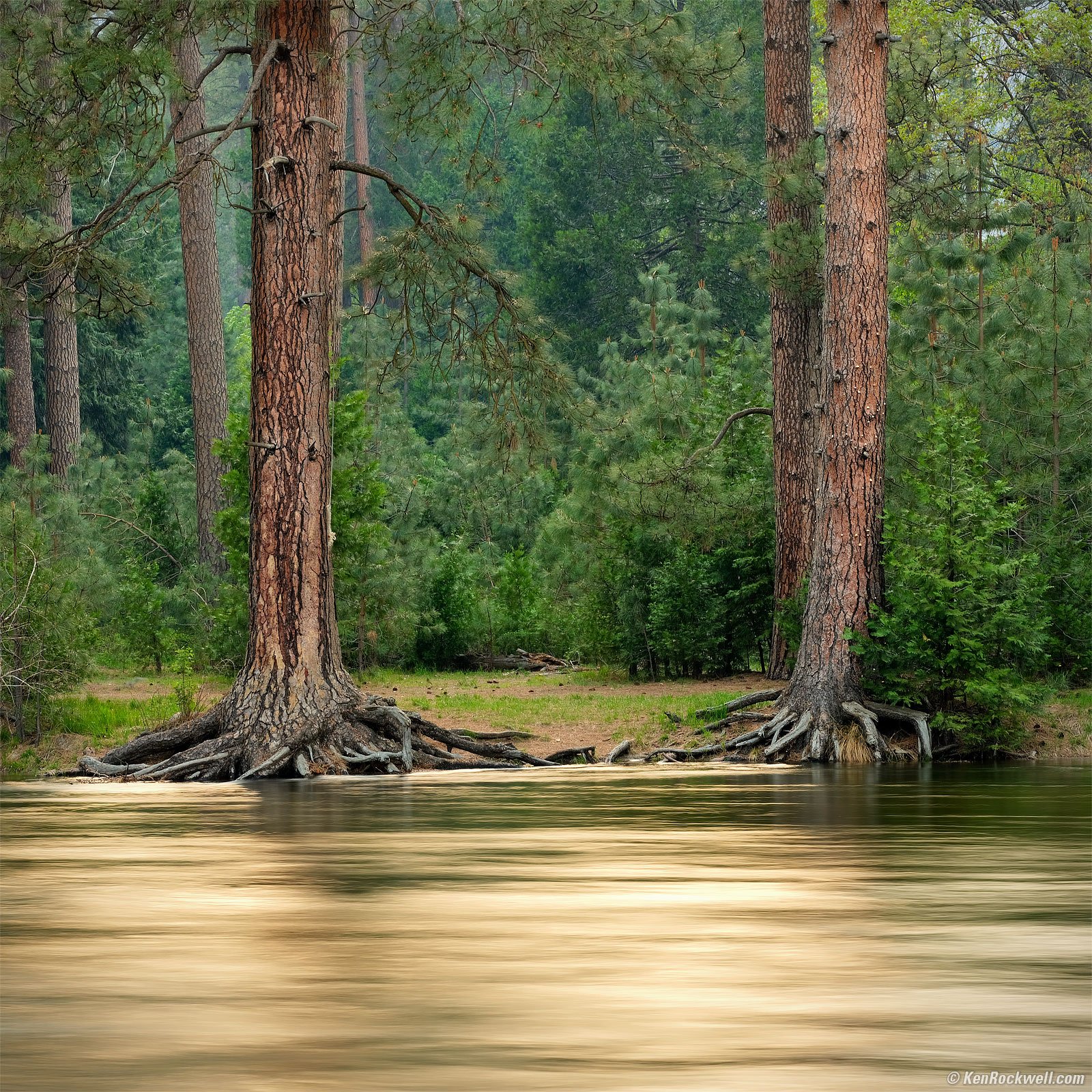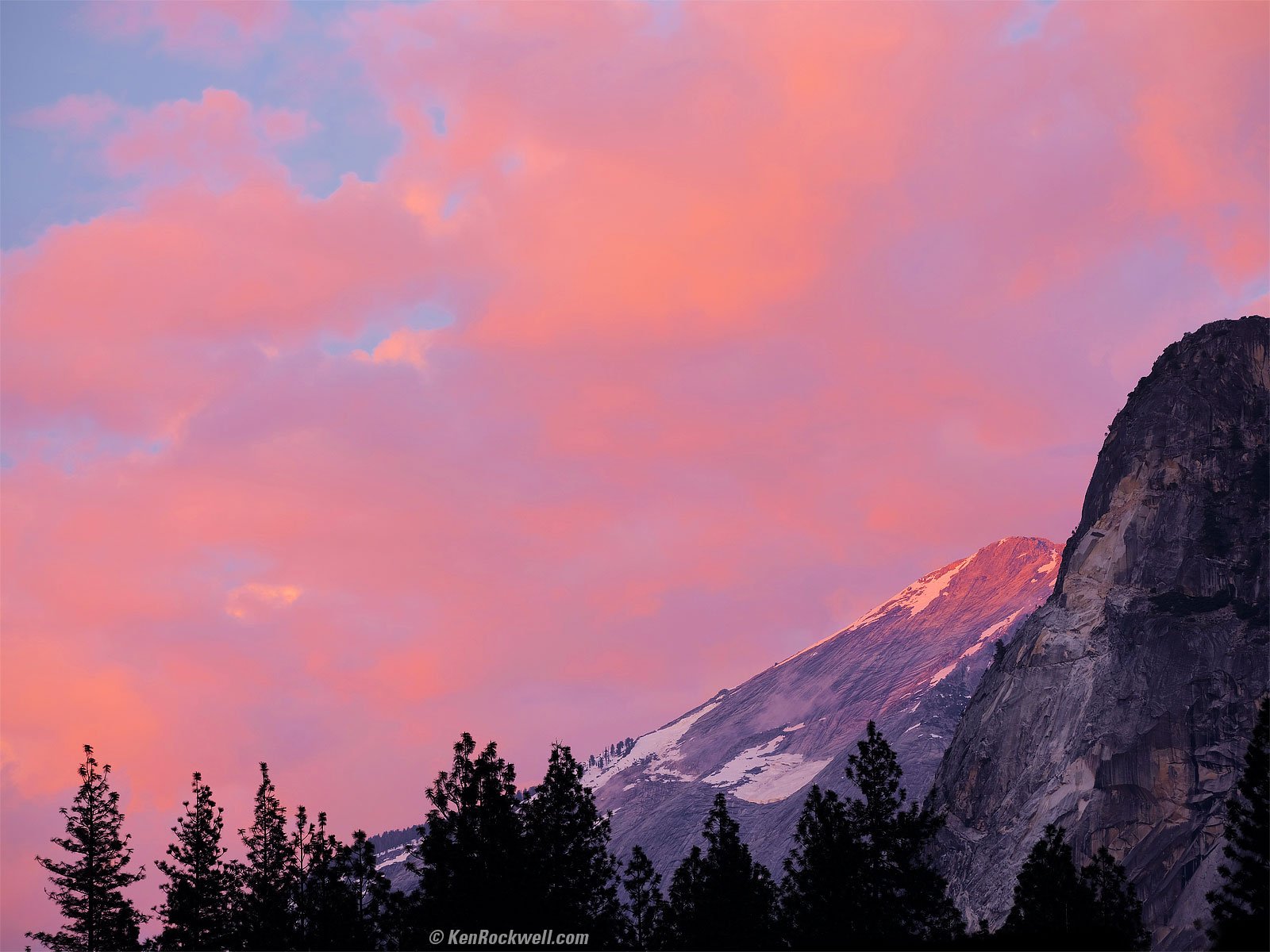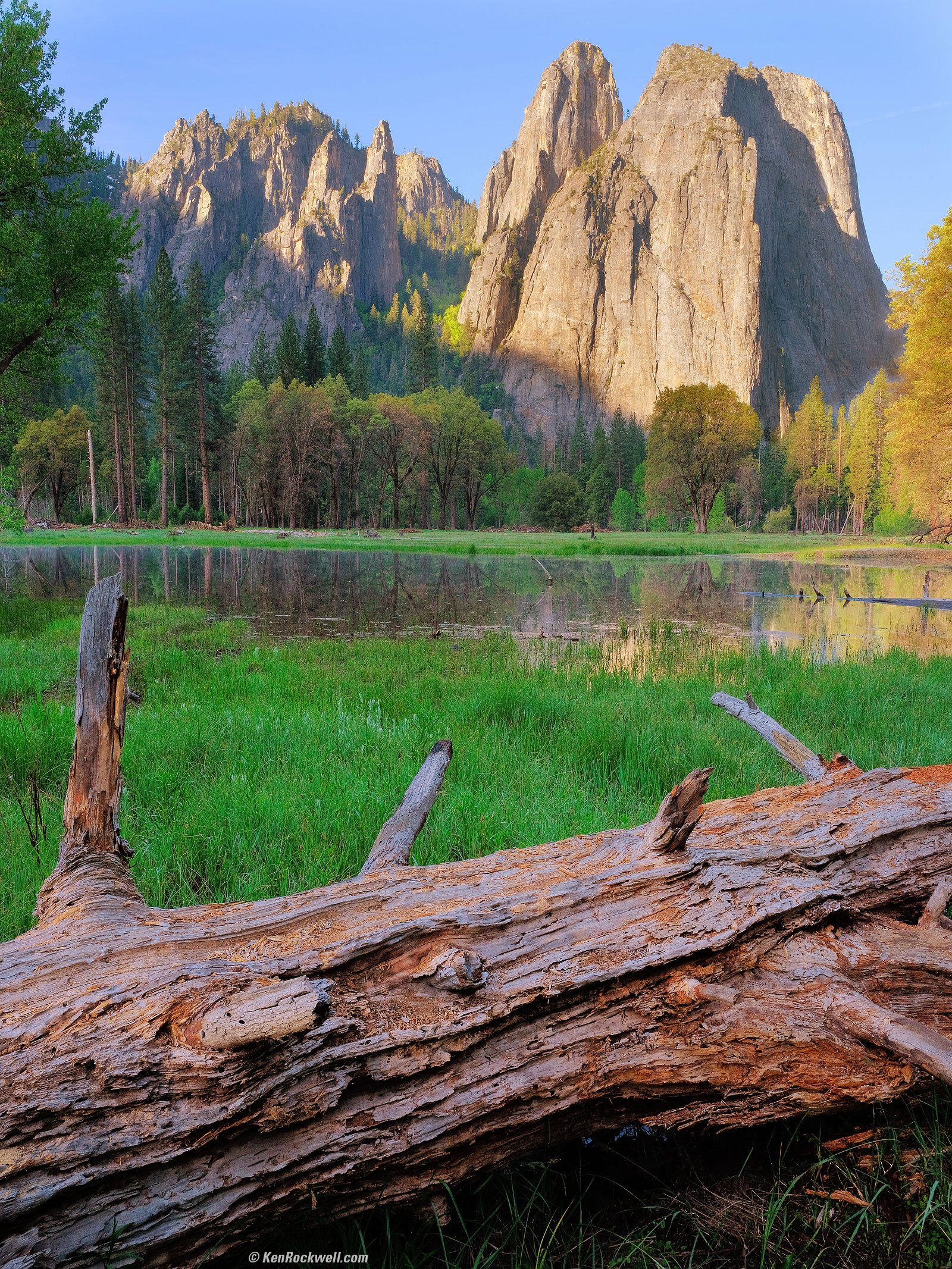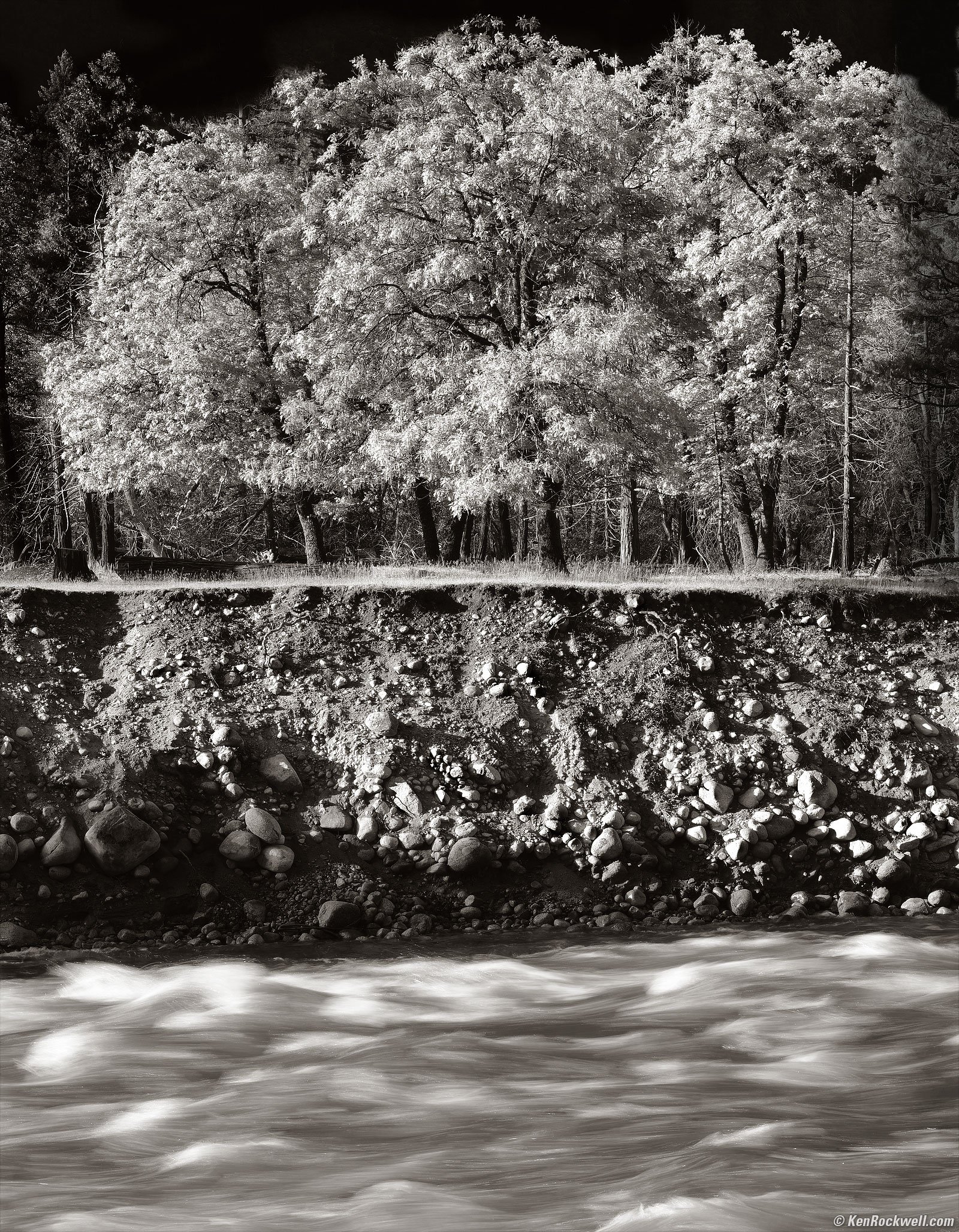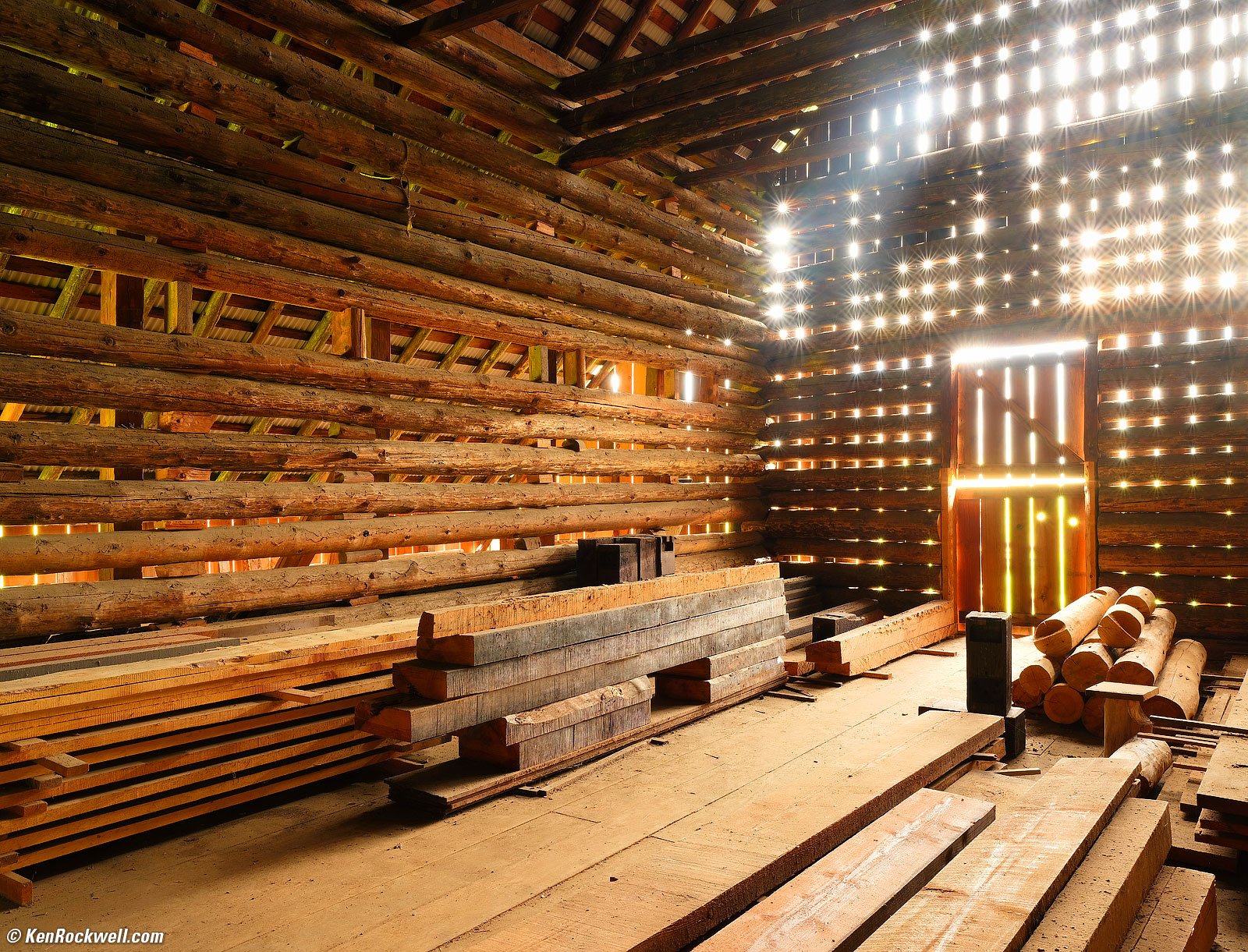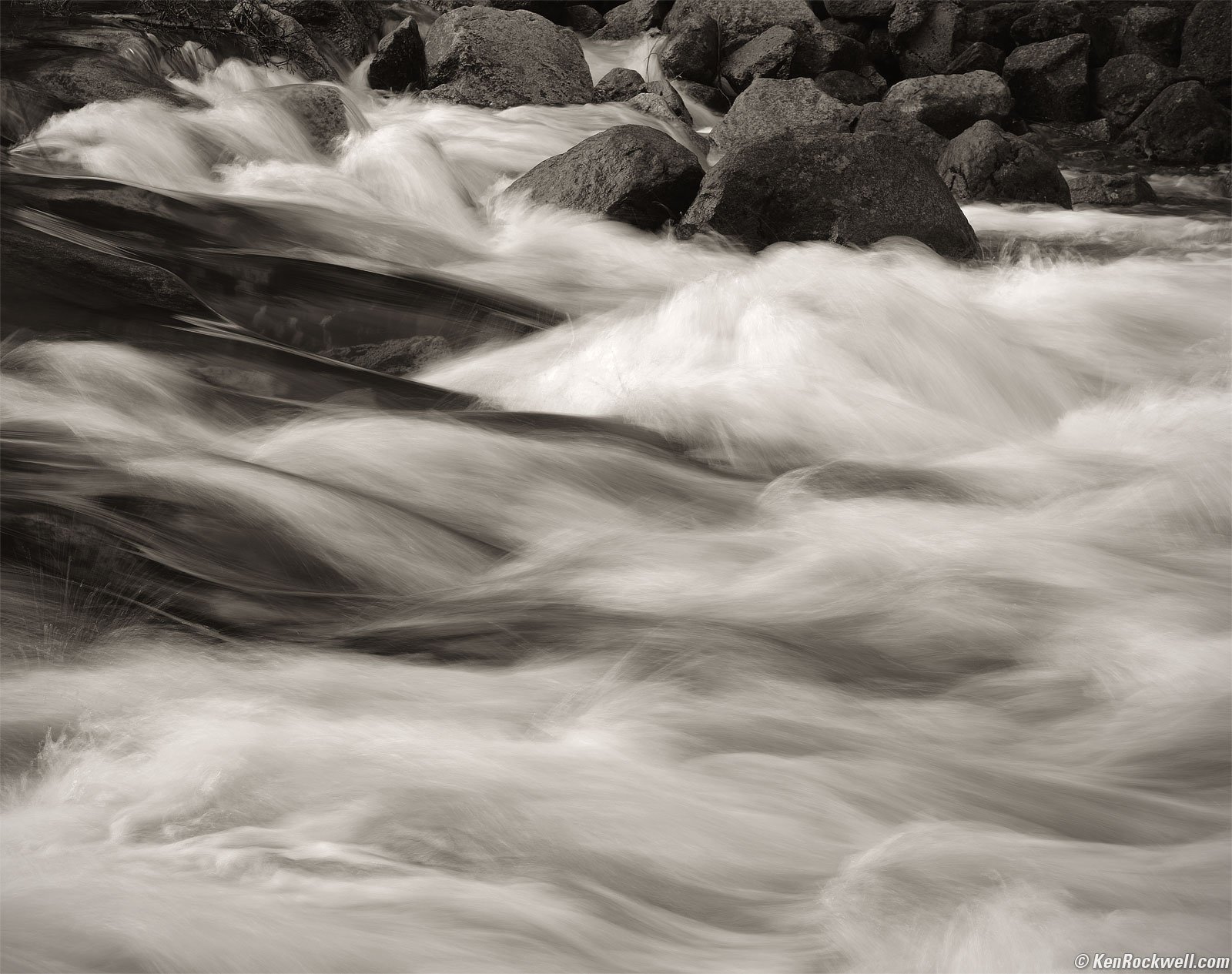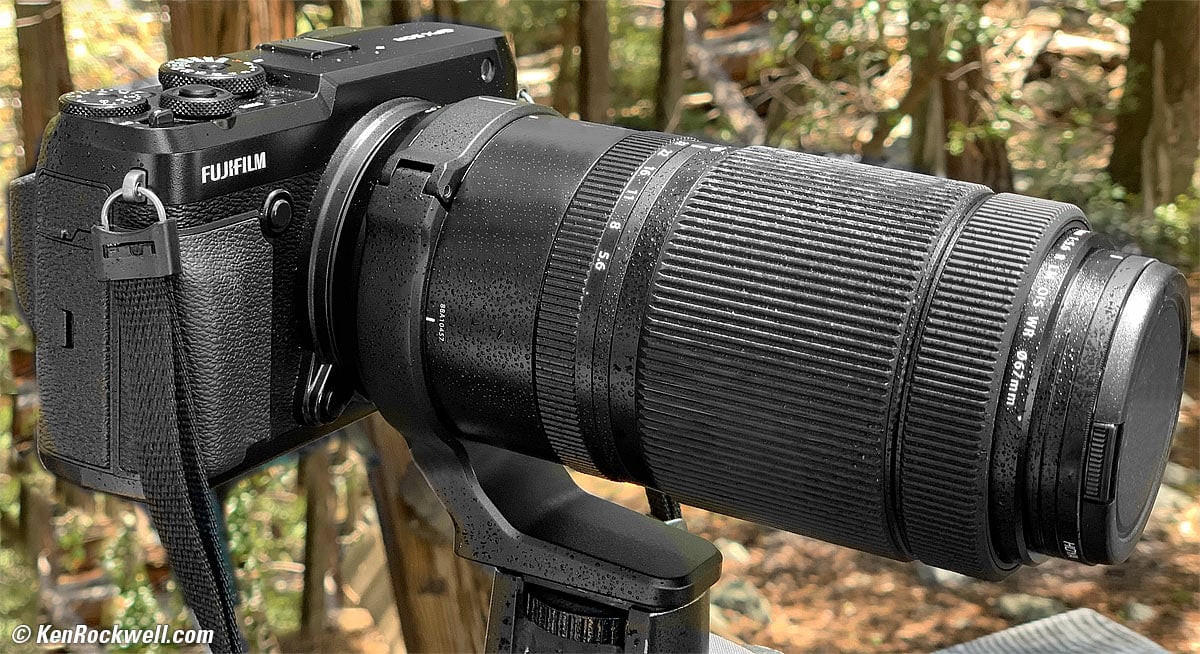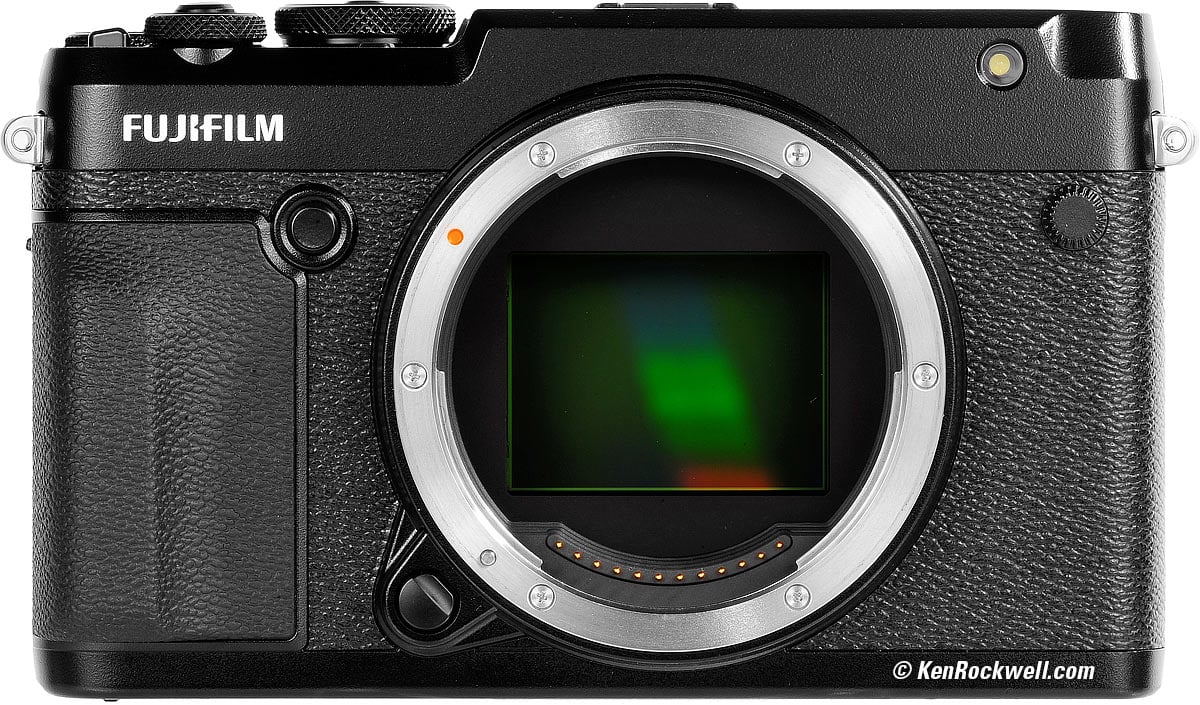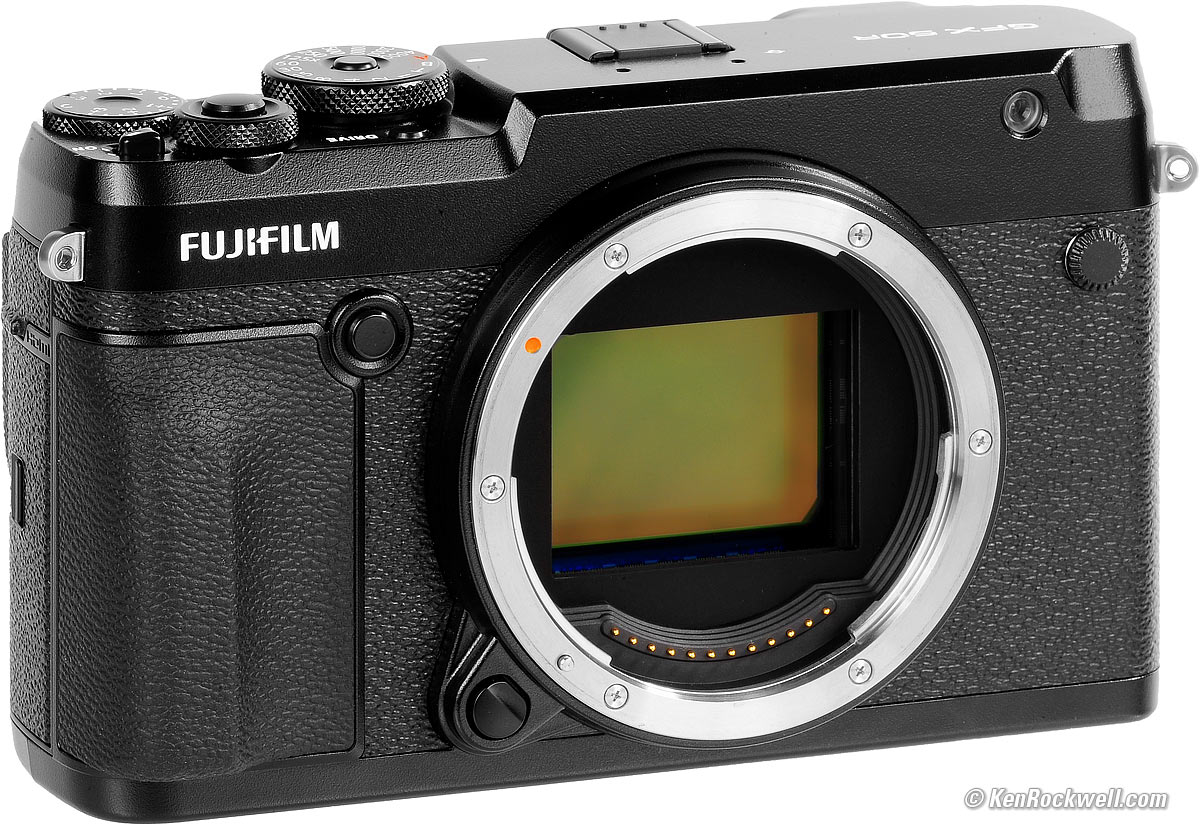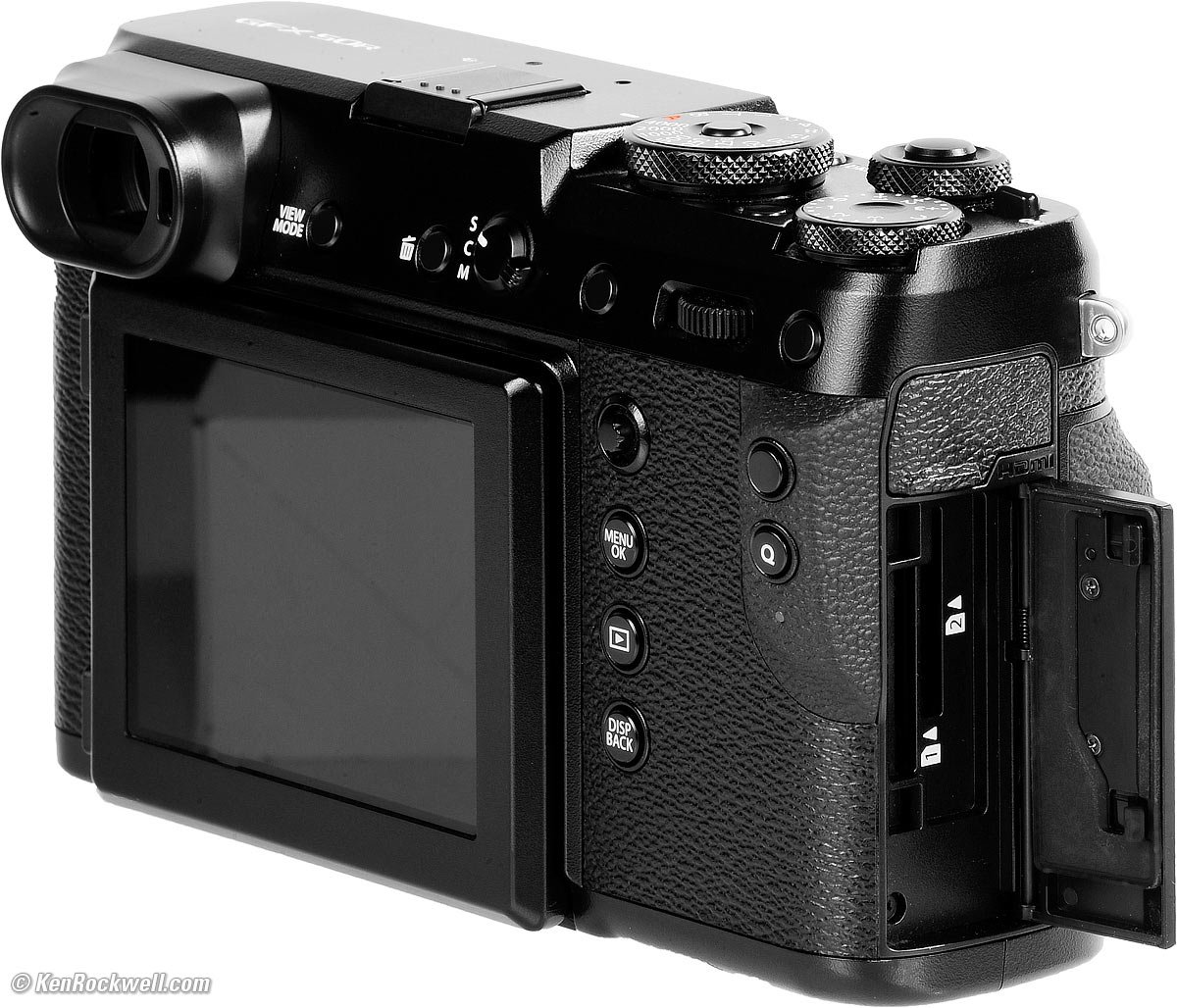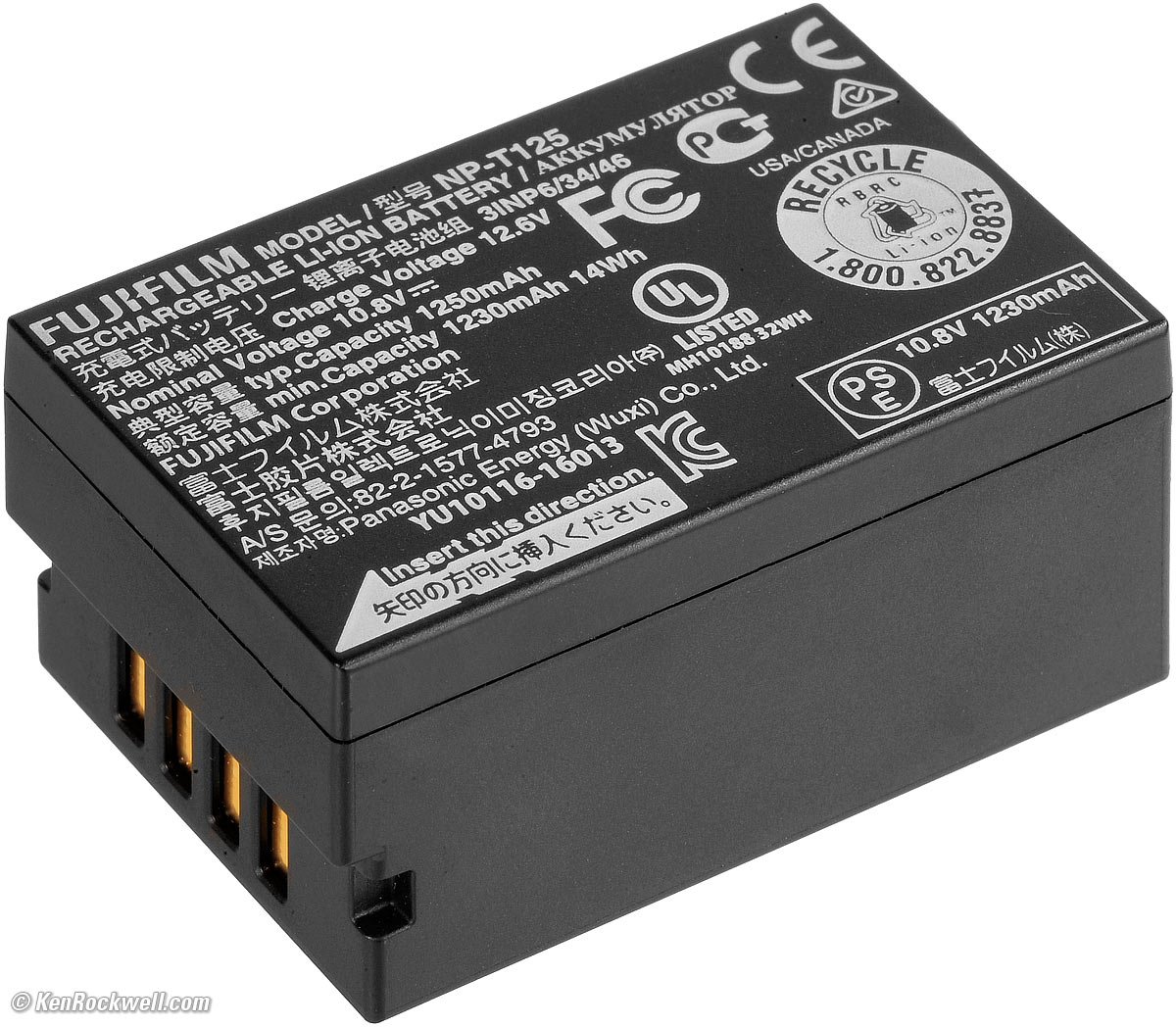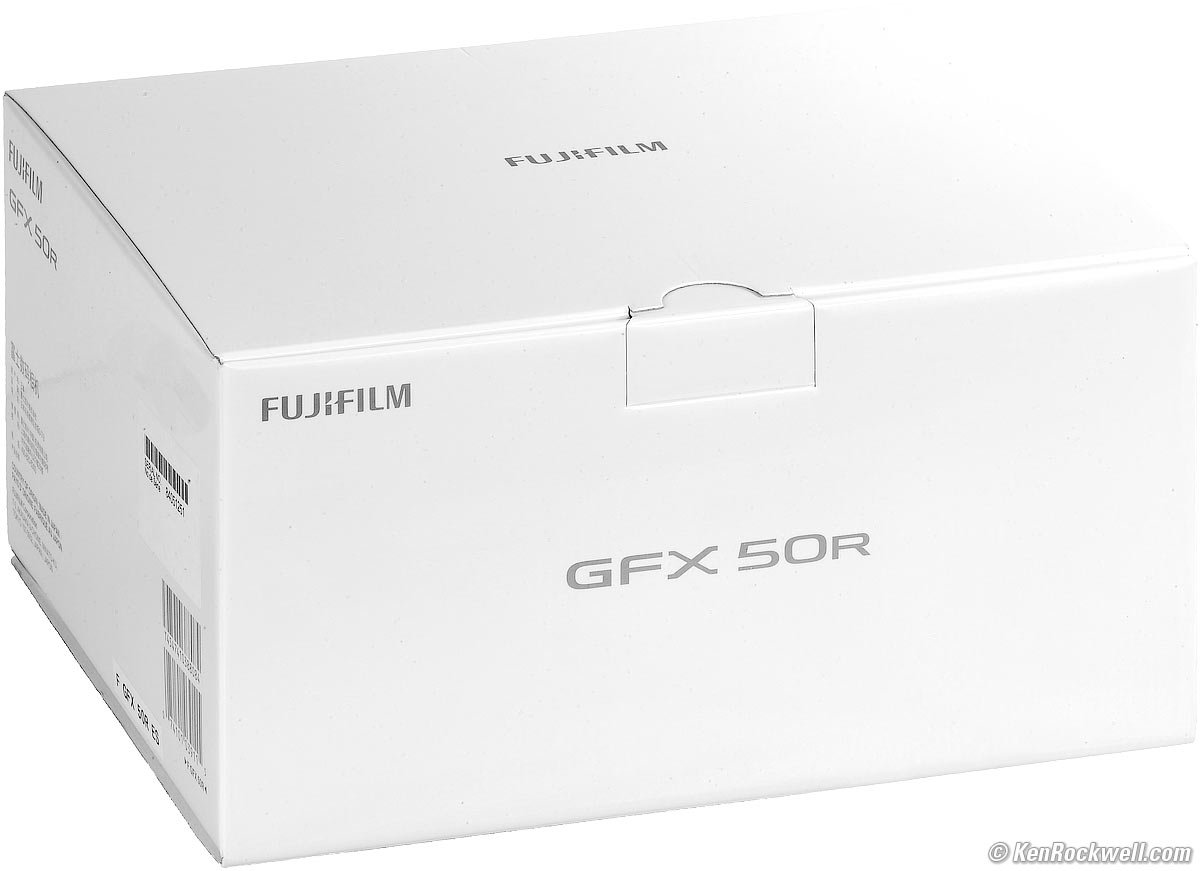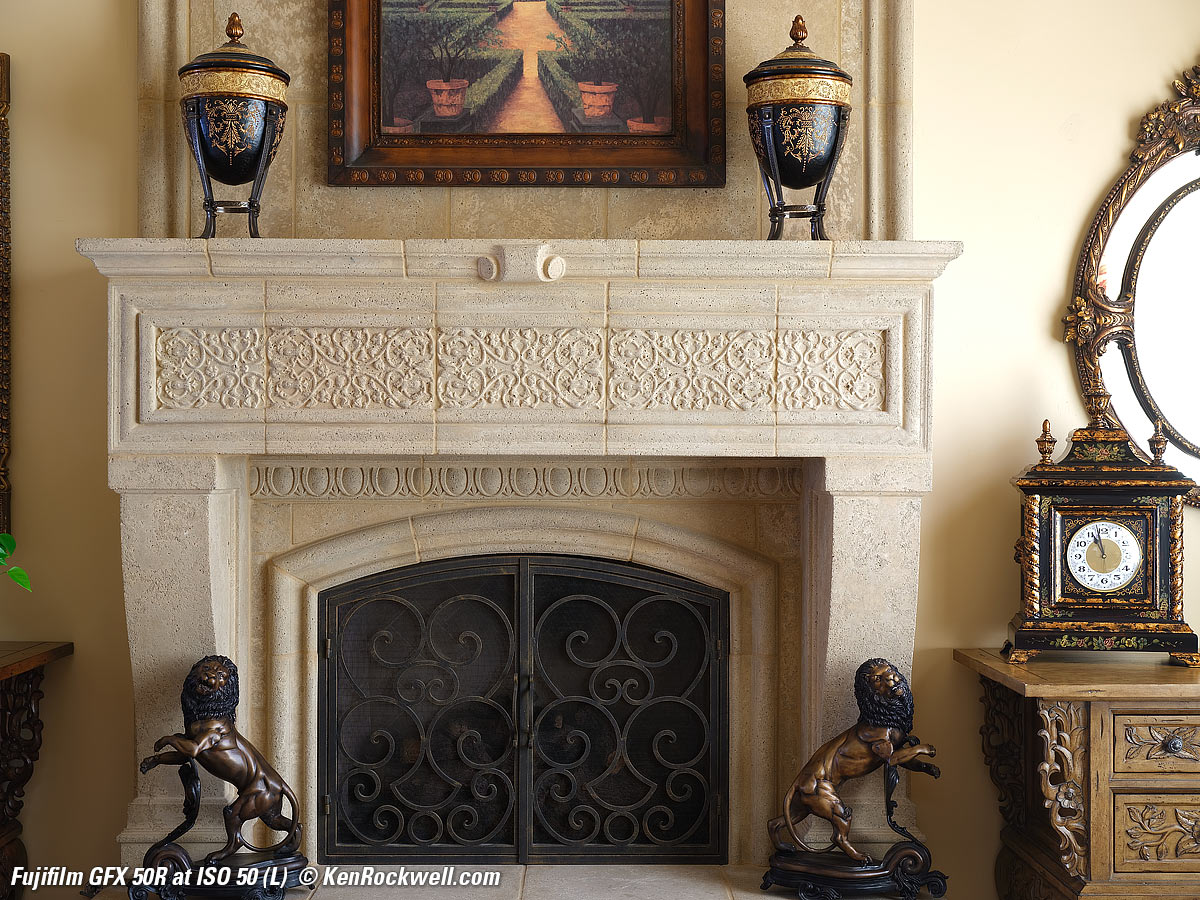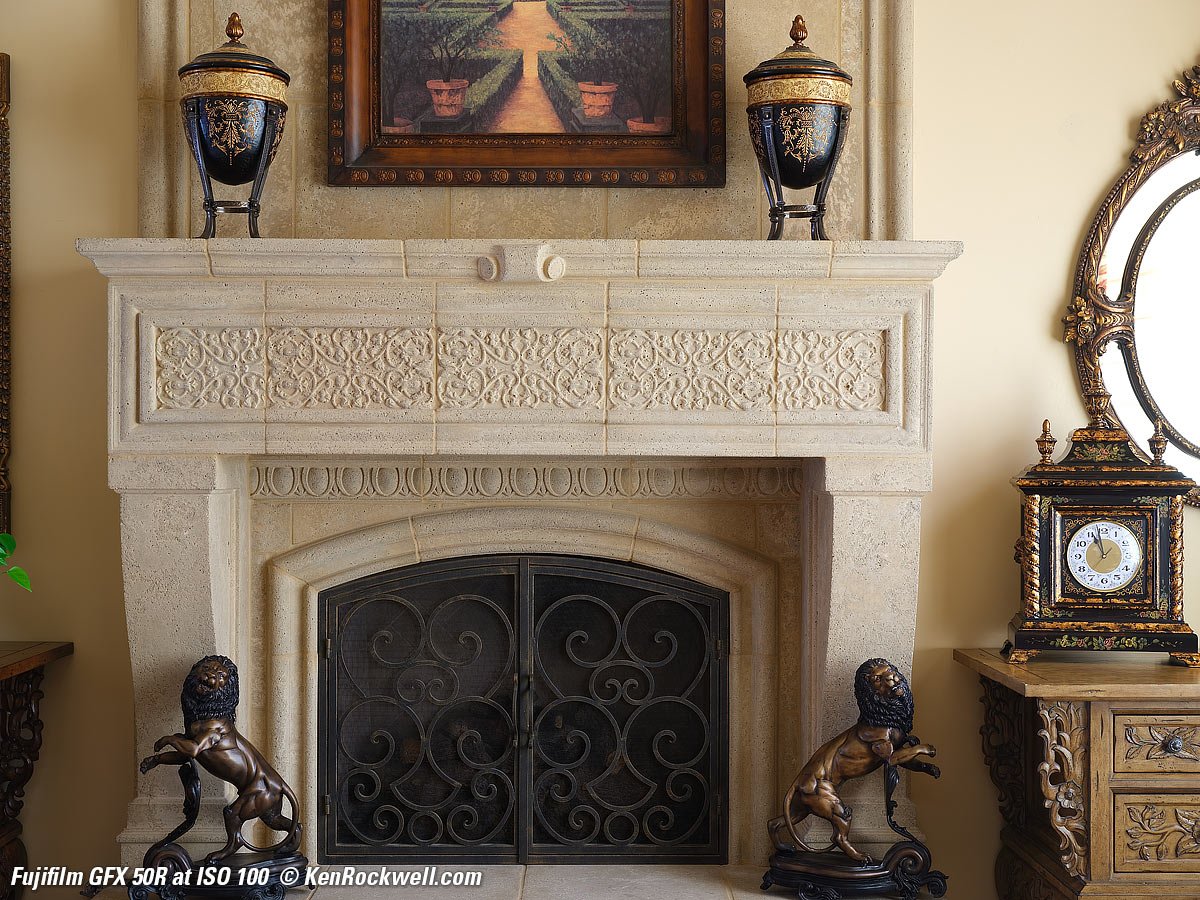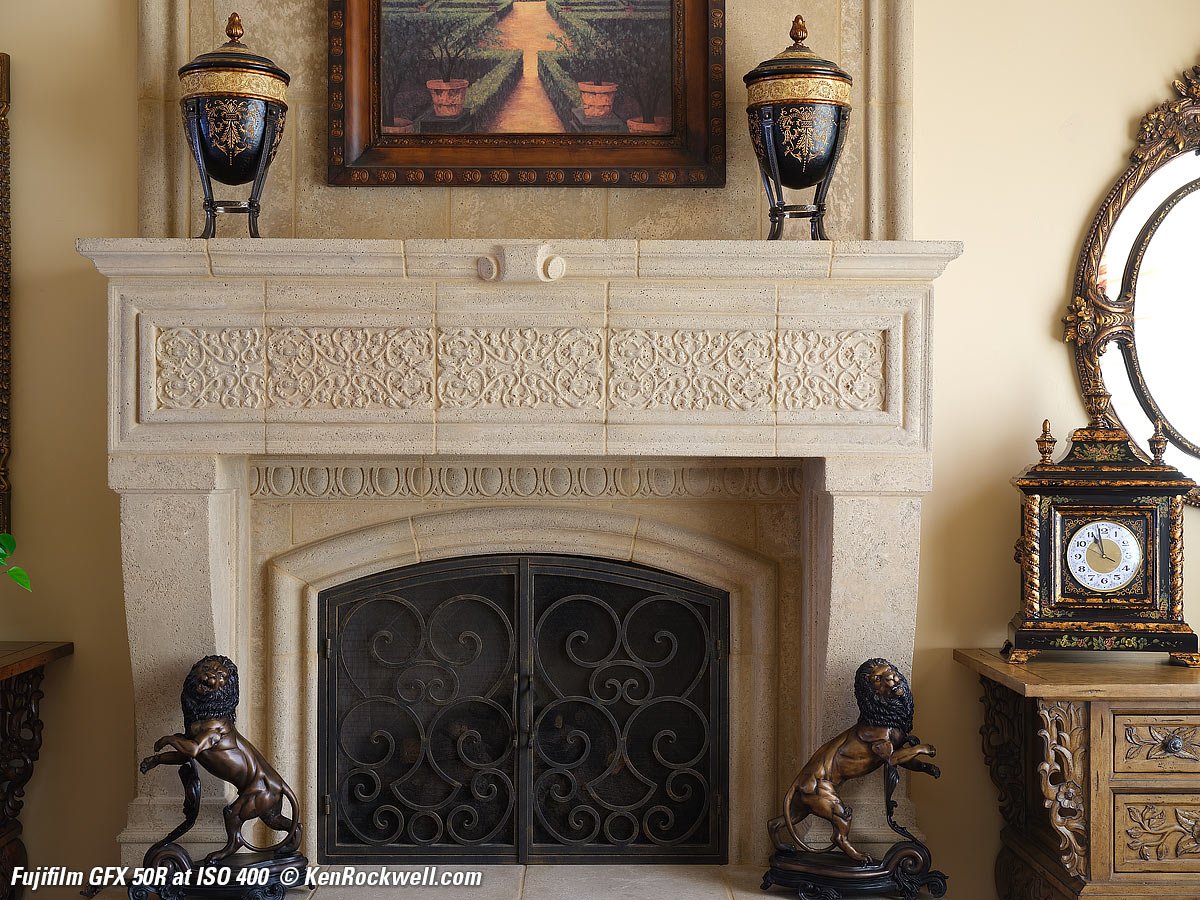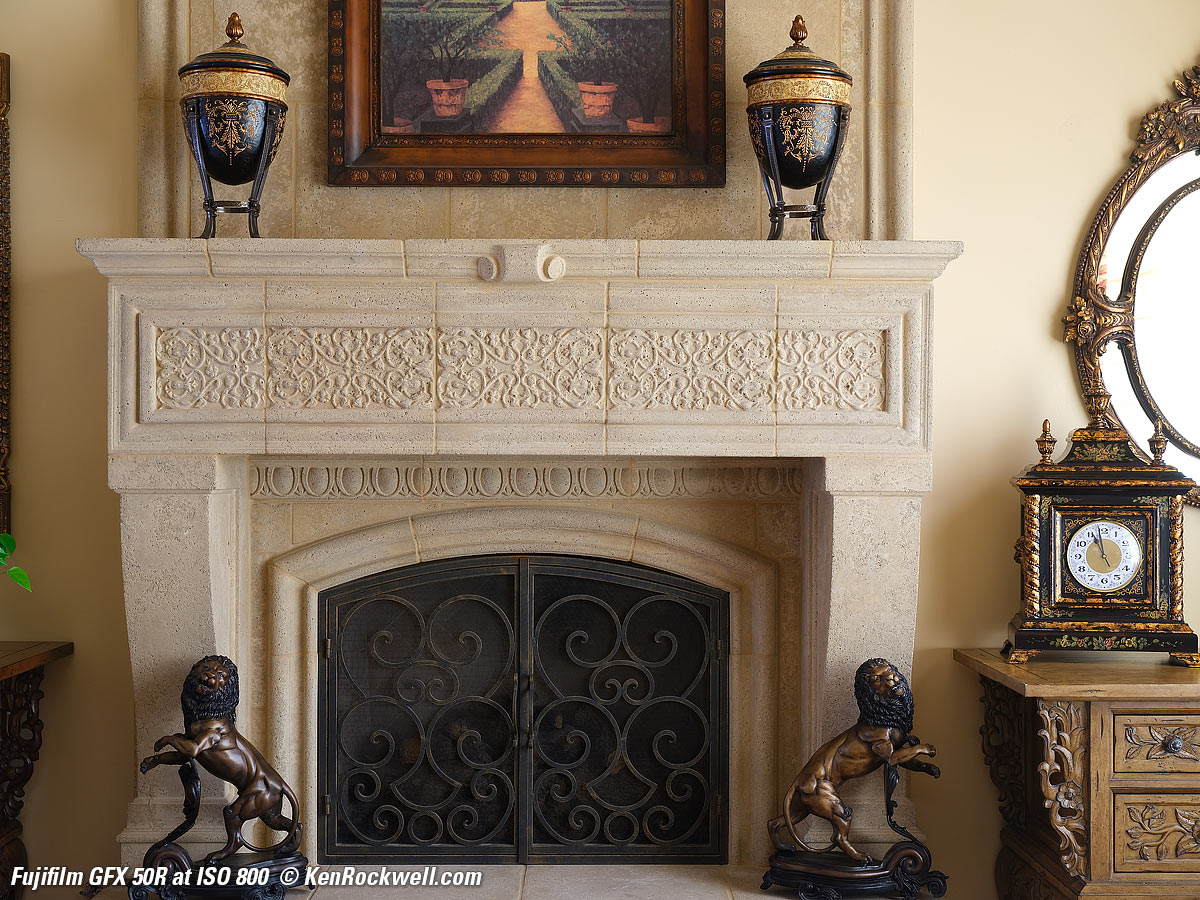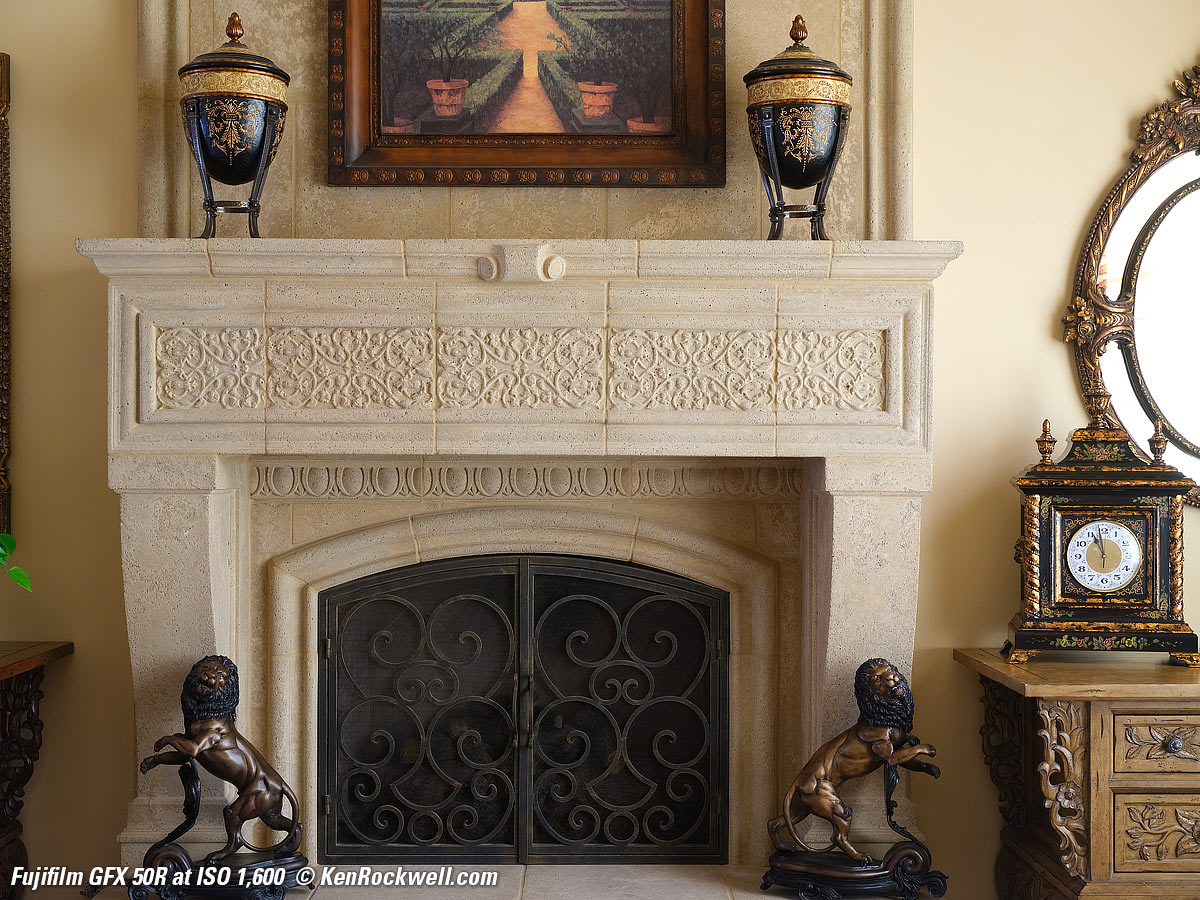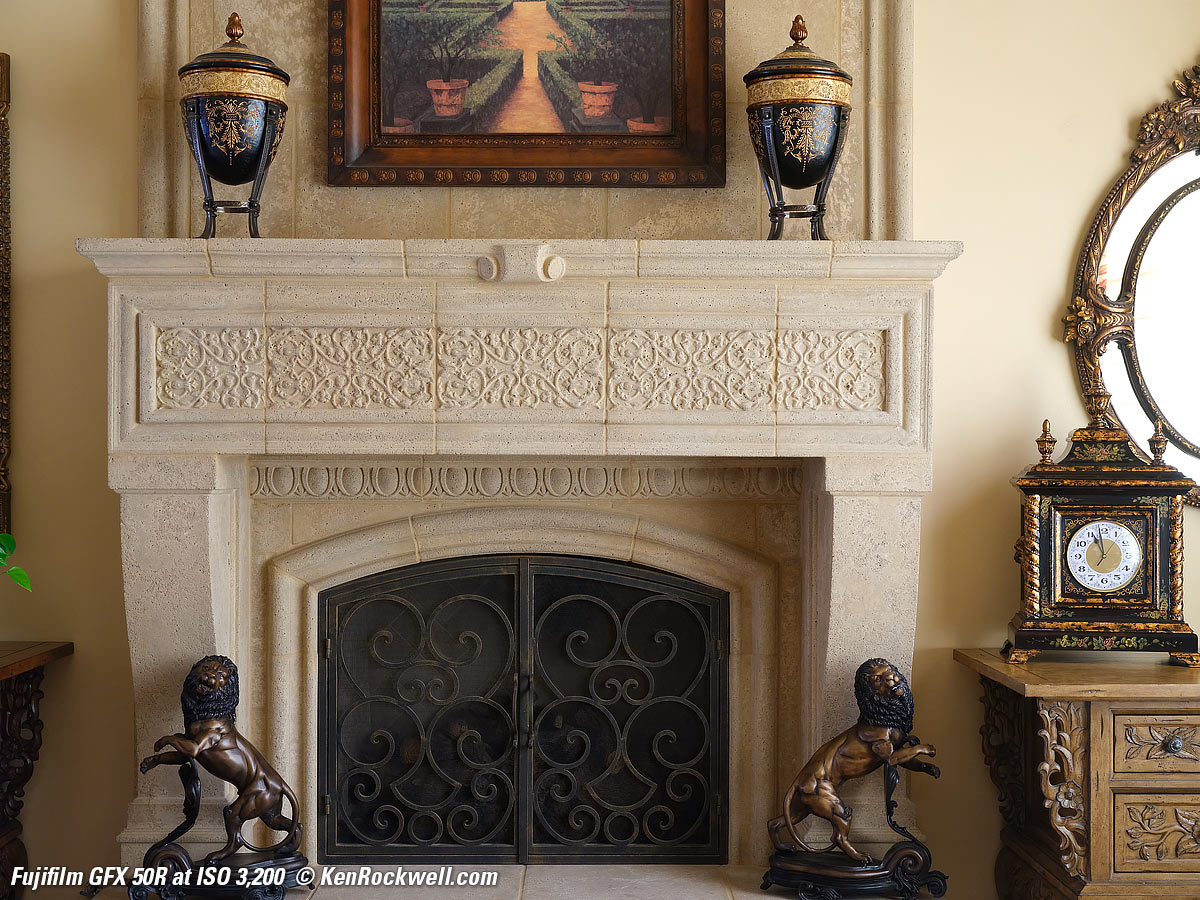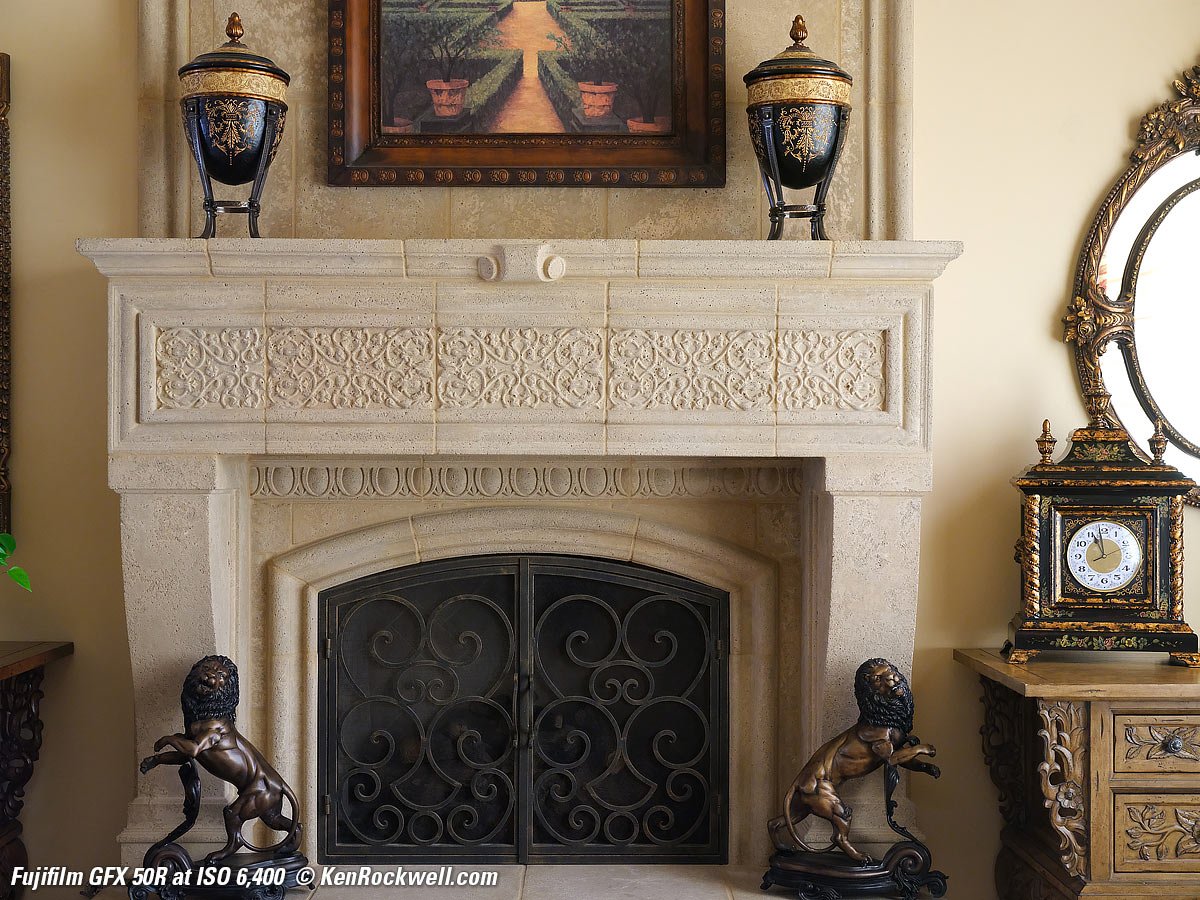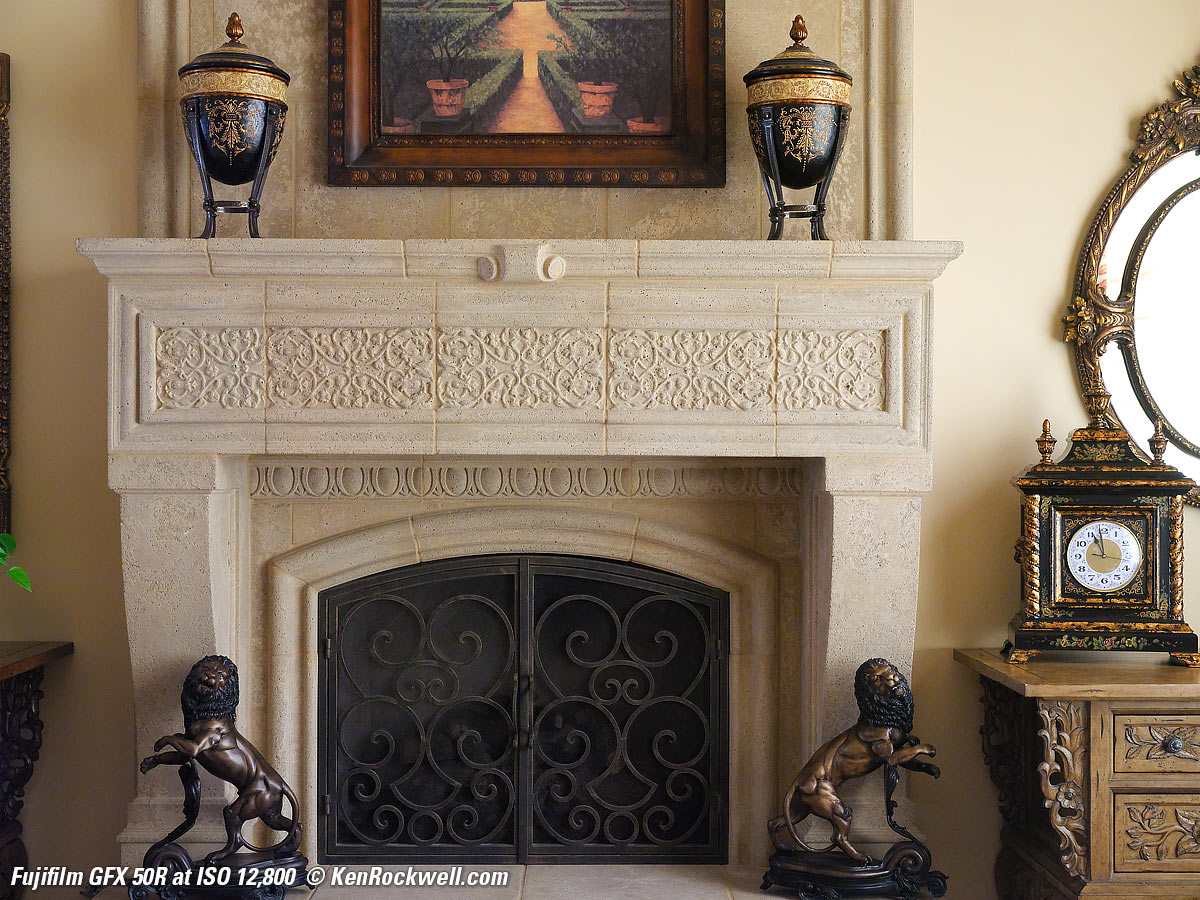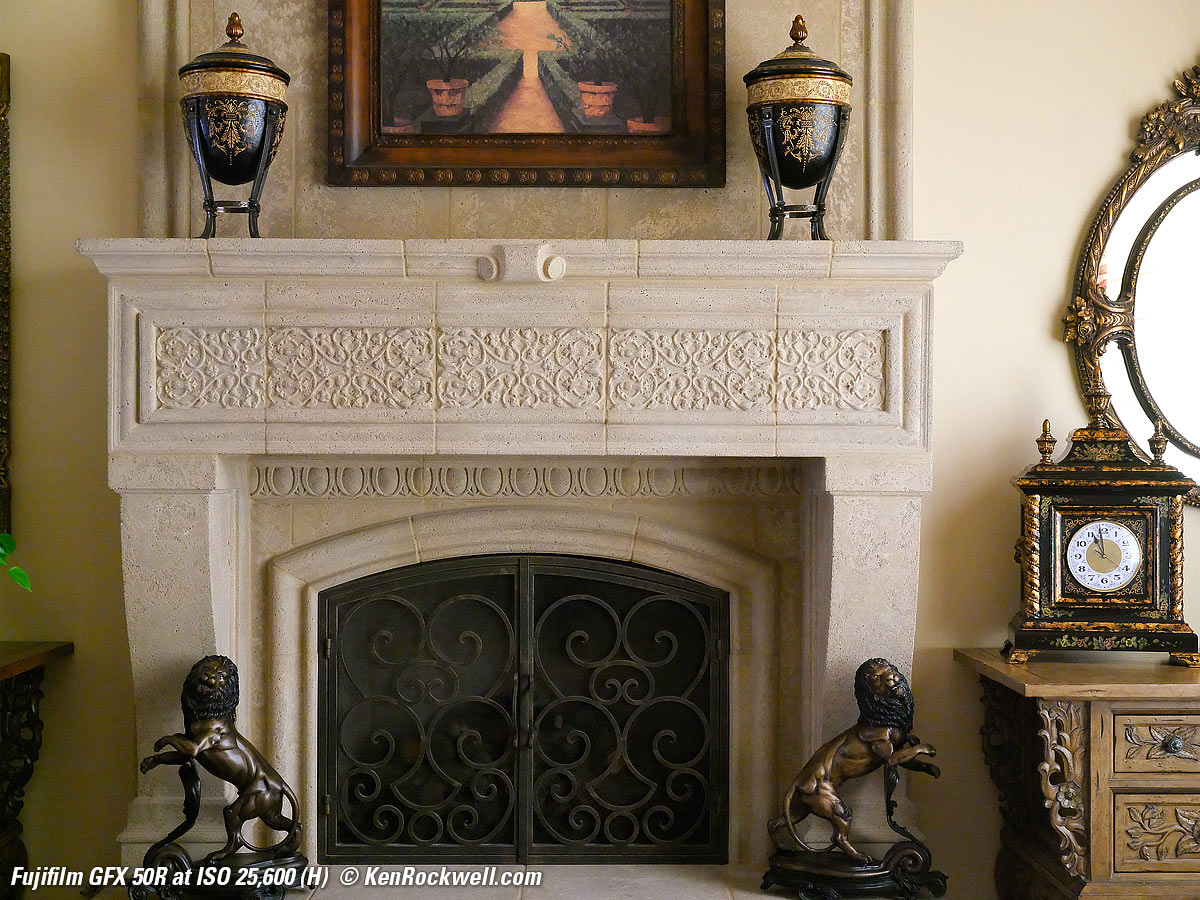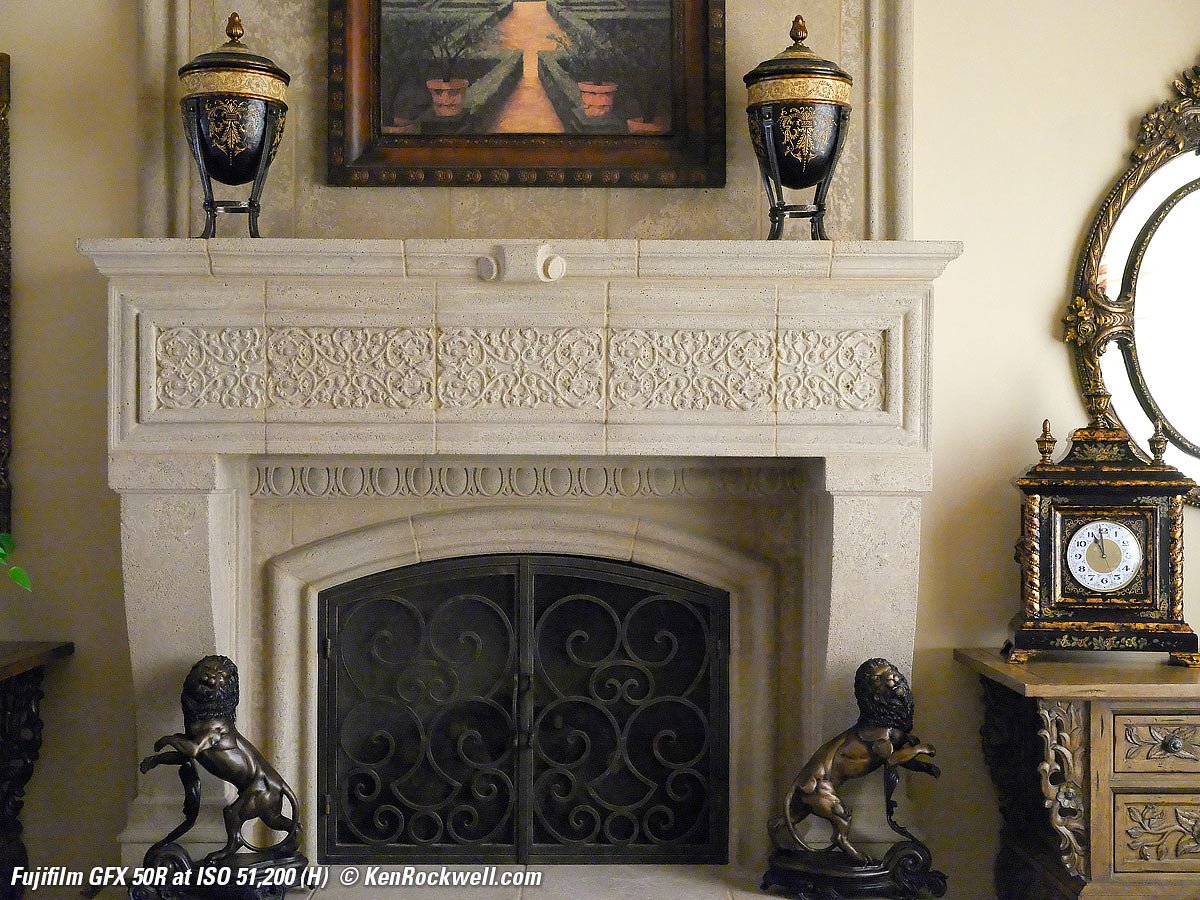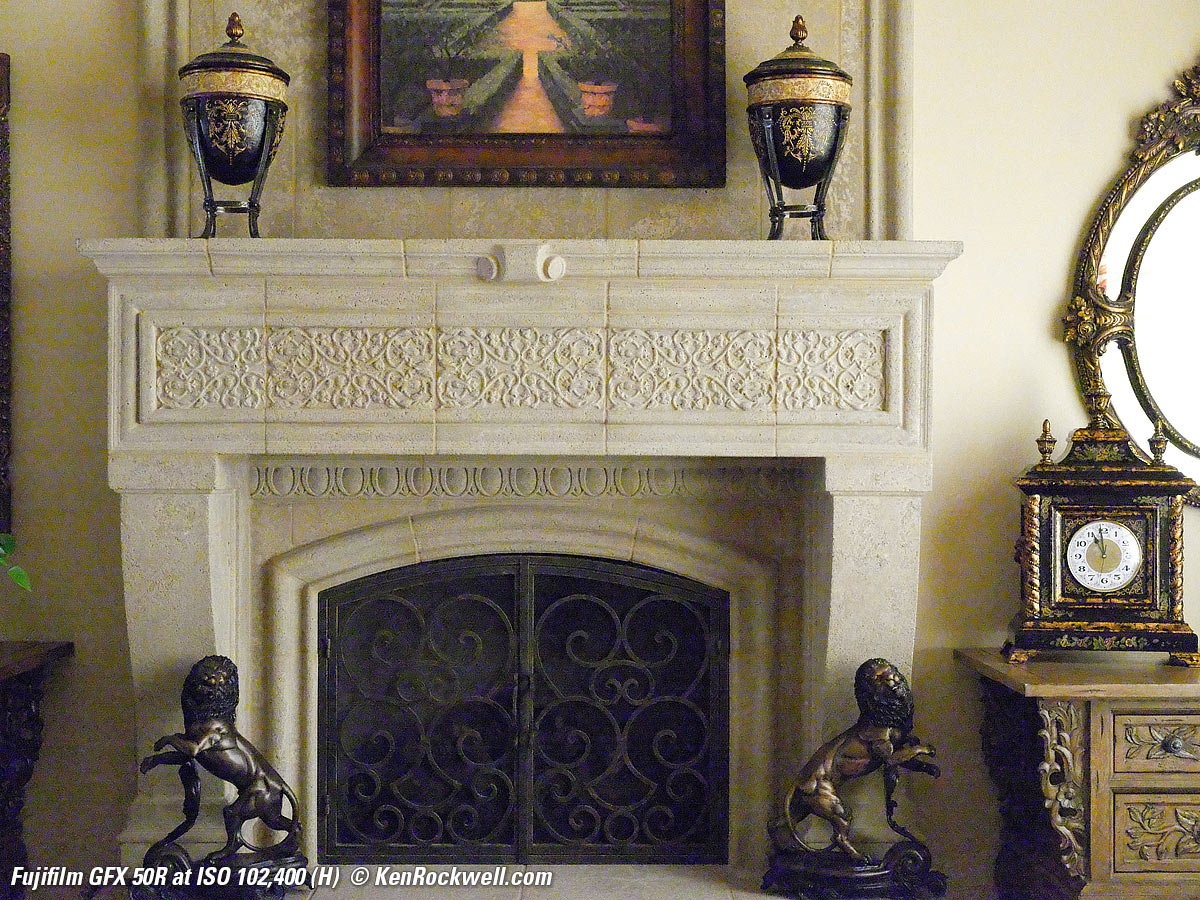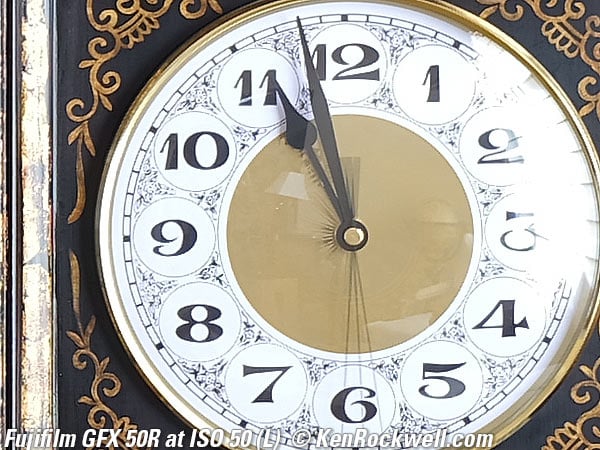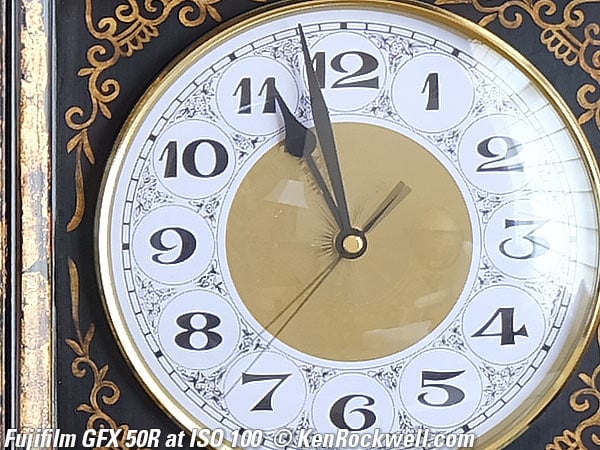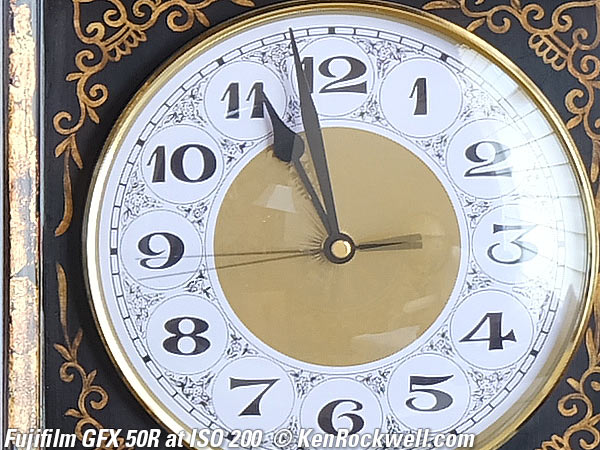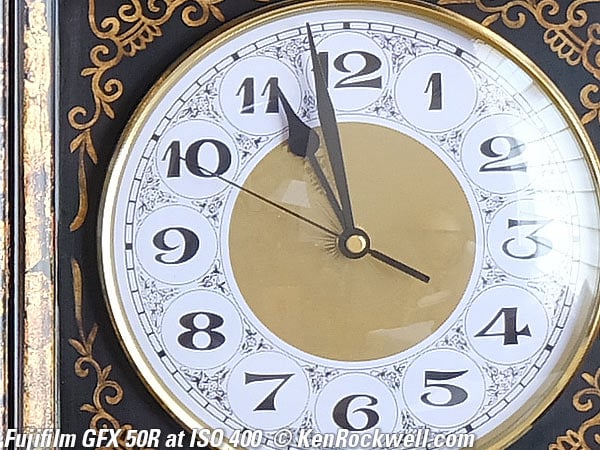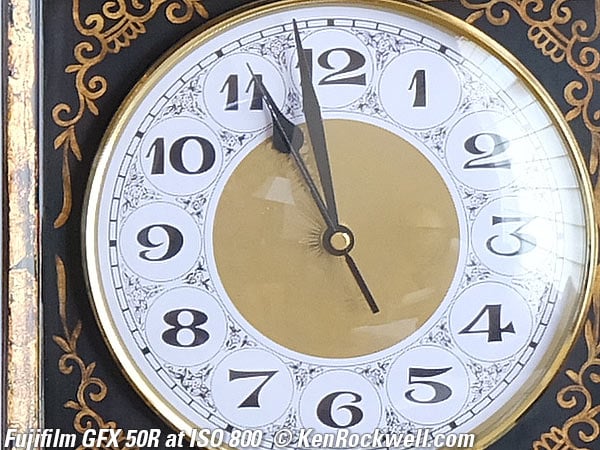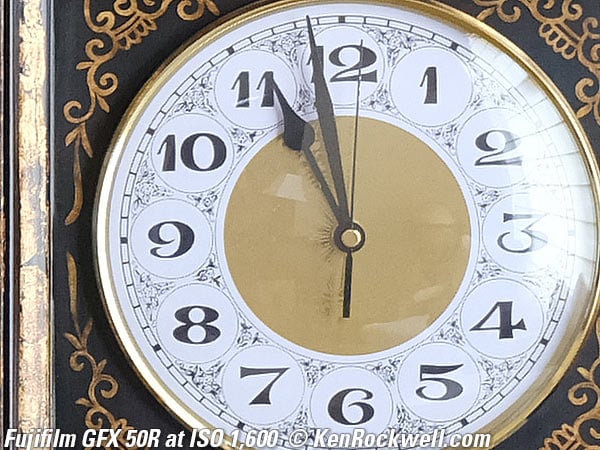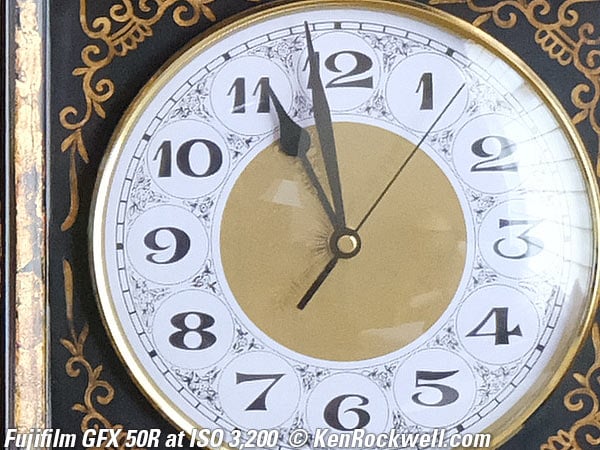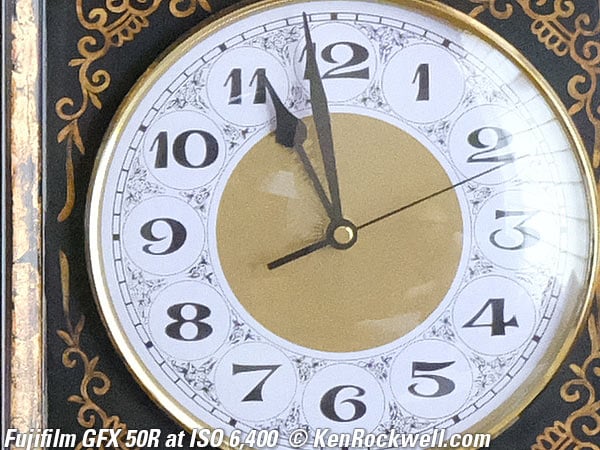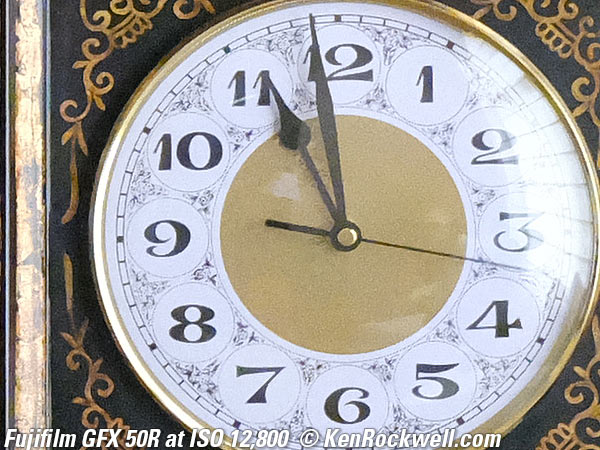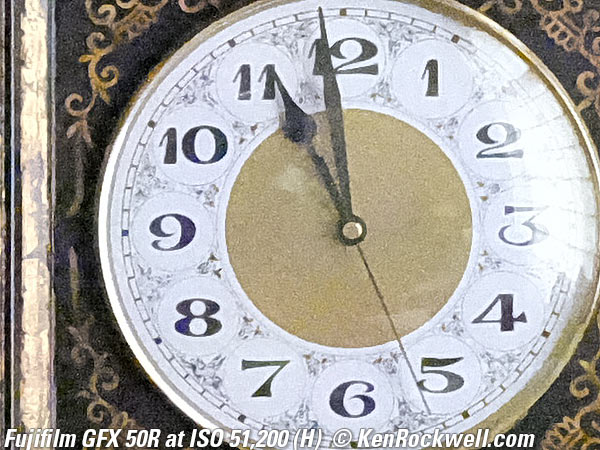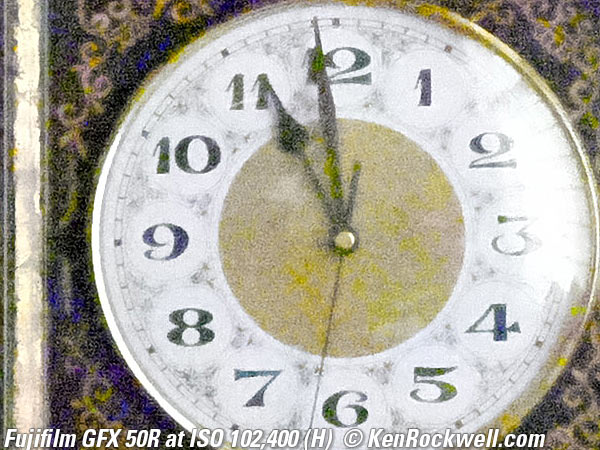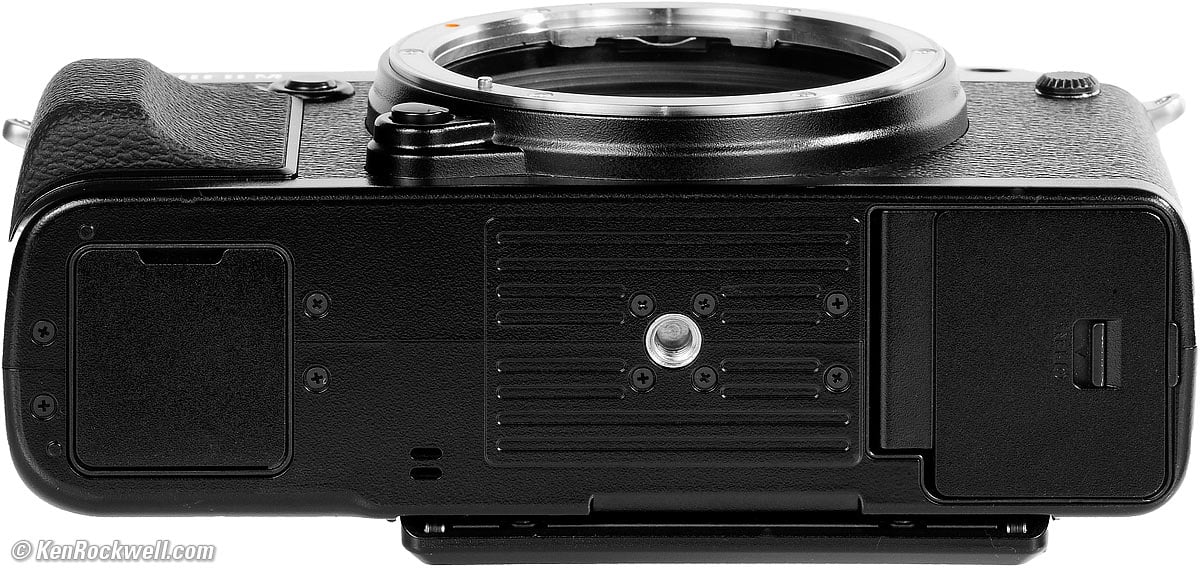Fujifilm GFX 50R
51MP 33 × 44mm Medium-Format
The Texas LEICA (2018~2022)
Sample Images Intro Specifications
Accessories Performance Compared
User's Guide Recommendations More
Fujifilm GFX 50R (27.2 oz./772g with battery and one SD card, has two SD slots, $4,499 new at Amazon or about $2,250 used if you know How to Win at eBay, and may be available used at B&H.) and Fujifilm GF 32-64mm f/4. bigger.
This all-content, junk-free website's biggest source of support is when you use those or any of these links to approved sources when you get anything, regardless of the country in which you live. Thanks for helping me help you! Ken.
November 2022 Better Pictures Fuji GFX System GF Lenses Sony LEICA Zeiss Nikon Canon All
Medium-Format vs. Full-Frame Image Quality Comparison (GFX 50R vs. Nikon Z7 vs. Canon 5DS/R)
Fujifilm GFX 50R. bigger.
Fujifilm GFX 50R. bigger.
Sample Images
Top Sample Images Intro Specifications
Accessories Performance Compared
User's Guide Recommendations More
These are all shot as NORMAL JPGs; no FINE or SUPERFINE JPGs or raw files were used or needed.
Half Dome in Clouds at Sunset, Yosemite Valley, 7:04 P.M., 07 May 2019. Fujifilm GFX 50R, Fujifilm GF 100-200mm f/5.6 OIS at 123.8 mm, f/11 at 1/20 at ISO 100, Perfectly Clear v3.7. bigger or full-resolution.
Yosemite Falls, 5:01 P.M., 07 May 2019. Fujifilm GFX 50R, Fujifilm GF 100-200mm f/5.6 OIS at 200mm, f/22 at 1/320 hand-held at ISO 100, Perfectly Clear v3.7, split-toned print. bigger.
Tree, Yosemite Valley, 7:04 .P.M., 07 May 2019. Fujifilm GFX 50R, Fujifilm GF 100-200mm f/5.6 OIS at 100mm, f/11 at 1/2 at ISO 100, Perfectly Clear v3.7, split-toned print. bigger.
Fern Springs, Yosemite Valley, 3:43 P.M., 08 May 2019. Fujifilm GFX 50R, Fujifilm GF 32-64mm at 58.6mm, f/32 at 3 seconds at ISO 100, Perfectly Clear v3.7, split-toned print. bigger.
Backlit Tree, Yosemite Valley, 5:05 P.M., 08 May 2019. Fujifilm GFX 50R, Fujifilm GF 100-200mm f/5.6 OIS at 164.5 mm, f/5.6 at 1/170 at ISO 100, Perfectly Clear v3.7, split-toned print. bigger.
Two Pine Trees on the Bank of the Merced River, Yosemite Valley, 7:26 P.M., 08 May 2019. Fujifilm GFX 50R, Fujifilm GF 100-200mm f/5.6 OIS at 100mm, f/16 at 2 seconds at ISO 100, Perfectly Clear v3.7. bigger.
Alpenglow, Yosemite Valley, 7:52 P.M., 08 May 2019. Fujifilm GFX 50R, Fujifilm GF 100-200mm f/5.6 OIS at 200mm, f/11 at 1/6 at ISO 100, Perfectly Clear v3.7. bigger.
Yosemite Valley at Sunrise with Fallen Tree in Foreground, 7:05 A.M., 09 May 2019. Fujifilm GFX 50R, Fujifilm GF 32-64mm at 32mm, f/32 at 1/12 at Dynamic Range 400% at ISO 400, Perfectly Clear v3.7. bigger, full-resolution or awful camera-original © JPG file.
The big, fat JPGs have all the data I need to do any kind of editing, white balance correction and shadow reclamation with no need for raw files.
Three Textures, Merced River, Yosemite Valley, 7:40 A.M., 09 May 2019. Fujifilm GFX 50R, Fujifilm GF 100-200mm f/5.6 OIS at 123.8 mm, f/22 at 1/6 at ISO 100, Perfectly Clear v3.7, split-toned print. bigger.
Inside a Barn, Yosemite National Park, 3:25 ~ 3:29 P.M., 09 May 2019. Fujifilm GFX 50R, Fujifilm GF 32-64mm at 32mm, f/16 for four minutes at ISO 100, Perfectly Clear v3.7. bigger or full-resolution or camera-original © JPG file.
Unique to the GFX 50R is that shutter speeds up to one full hour are just normal selections. In this case, a four-minute exposure is easy, and with the self-timer, no need for a remote release.
Flowing Water, Merced River, Yosemite Valley, 8:23 A.M., 10 May 2019. Fujifilm GFX 50R, Fujifilm GF 100-200mm f/5.6 OIS at 158.8 mm, f/16 at 1/7 second at ISO 100, Perfectly Clear v3.7, split-toned print. bigger.
More at Yosemite in Springtime, May 2019 and at High ISOs.
Introduction
Top Sample Images Intro Specifications
Accessories Performance Compared
User's Guide Recommendations More
|
I buy only from these approved sources. I can't vouch for ads below. |
The GFX 50R is a compact mirrorless camera with a big 33 × 44mm medium-format sensor. This sensor is bigger than 24 × 36mm "full frame," and gives cleaner, clearer pictures than any full-frame camera.
It looks and handles just like any of Fuji's popular little APS-C cameras, with pretty much all the same great autofocus and image adjustment options and dedicated dials. This GFX 50R is much more convenient than the other weird medium format cameras I've used before; it's now just as practical as old-fashioned full-frame was.
Seeing how practical and reasonably priced this is, how superior are its images, it makes sense to consider moving straight to medium format mirrorless, skipping full-frame entirely. The real question is your preference for color rendition. Fujifilm's color rendition and lower contrasts are fantastic for people pictures and natural colors while Nikon and Canon and Sony full-frame are better for wild colors if you prefer them for nature and landscapes.
The GFX 50R a rangefinder-style mirrorless camera, just 27% bigger in every dimension than Fuji's little APS-C cameras. This is a Texas LEICA, like the Plaubel Makina 6×7.
I'd get my GFX-50R at Amazon, used at eBay (if you know How to Win at eBay), or used at B&H.)
New since 2017's GFX 50S
 Compact body; looks and handles just like a grown-up X-E3.
Compact body; looks and handles just like a grown-up X-E3.
 Much less expensive and far more compact than the older GFX 50S, all with the same great image quality.
Much less expensive and far more compact than the older GFX 50S, all with the same great image quality.
 Manual shutter speeds directly set all the way out to an hour, no need for a timer or remote release.
Manual shutter speeds directly set all the way out to an hour, no need for a timer or remote release.
 Adds a dedicated Exposure Compensation dial sadly absent on the older GFX 50S.
Adds a dedicated Exposure Compensation dial sadly absent on the older GFX 50S.
 Bluetooth Low Energy.
Bluetooth Low Energy.
Good
 Superb medium-format image quality. No full frame camera matches the GFX 50R's high-ISO, noise and resolution performance at any price.
Superb medium-format image quality. No full frame camera matches the GFX 50R's high-ISO, noise and resolution performance at any price.
 Superior High ISO performance to any full-frame camera.
Superior High ISO performance to any full-frame camera.
 Fast and easy to use like Fuji's APS-C cameras with none of the weirdnesses of other cliquey medium format cameras.
Fast and easy to use like Fuji's APS-C cameras with none of the weirdnesses of other cliquey medium format cameras.
 Easy to set and shoot while wearing my favorite Head Sensatec touchscreen gloves. I haven't tried it with thick arctic gloves yet.
Easy to set and shoot while wearing my favorite Head Sensatec touchscreen gloves. I haven't tried it with thick arctic gloves yet.
 Sensor stays clean. Even though most of my shooting is at f/16~f/32, I've never seen any dirt in my photos.
Sensor stays clean. Even though most of my shooting is at f/16~f/32, I've never seen any dirt in my photos.
 Compact for medium format.
Compact for medium format.
 Body weighs the same as a full-frame mirrorless, and lenses weigh less than most lenses their size.
Body weighs the same as a full-frame mirrorless, and lenses weigh less than most lenses their size.
 Inexpensive. Sells for less and weighs only half as much as lower image quality full-frame cameras like Nikon's D5 and Canon's 1DX Mk II.
Inexpensive. Sells for less and weighs only half as much as lower image quality full-frame cameras like Nikon's D5 and Canon's 1DX Mk II.
 Two normal SD card slots.
Two normal SD card slots.
 Bigger battery with loads of power. While only rated 400 shots like small cameras, we don't shoot anywhere as many frames with medium format. I can shoot all day and still have half a charge left on just one battery!
Bigger battery with loads of power. While only rated 400 shots like small cameras, we don't shoot anywhere as many frames with medium format. I can shoot all day and still have half a charge left on just one battery!
 In-finder focus scale also shows depth-of-field, and can be used for setting the optimum aperture.
In-finder focus scale also shows depth-of-field, and can be used for setting the optimum aperture.
 Manually-set shutter speeds go all the way to an hour, not just 30 seconds.
Manually-set shutter speeds go all the way to an hour, not just 30 seconds.
 Precise, mostly metal construction; a real camera, not a plastic toy.
Precise, mostly metal construction; a real camera, not a plastic toy.
 Dedicated, clearly engraved dials.
Dedicated, clearly engraved dials.
 One normal battery for the whole system (some medium format cameras use separate batteries for the body and the back!).
One normal battery for the whole system (some medium format cameras use separate batteries for the body and the back!).
 Autofocus mode lever on the back of the camera, easily adjustable with your shooting thumb.
Autofocus mode lever on the back of the camera, easily adjustable with your shooting thumb.
 Live full-color RGB histograms displayed before you press the shutter (something neither Sony nor Nikon can do except on playback when it's too late), but you have to activate this in the menu system. See How to Get Live Color Histograms.
Live full-color RGB histograms displayed before you press the shutter (something neither Sony nor Nikon can do except on playback when it's too late), but you have to activate this in the menu system. See How to Get Live Color Histograms.
 Silent electronic shutter goes to 1/16,000.
Silent electronic shutter goes to 1/16,000.
 Long Exposure Noise Reduction doesn't take any extra time. When I make an eight-minute exposure, all it takes is eight minutes.
Long Exposure Noise Reduction doesn't take any extra time. When I make an eight-minute exposure, all it takes is eight minutes.
 4:3 "Ideal Format" aspect ratio.
4:3 "Ideal Format" aspect ratio.
 Huge range of as-shot crop options: 3:2 Barnack's Folly, 4:3 native, 4:5 large-format, 6:7 Mamiya, 1:1 Hasselblad square, 16:9 and 2.71:1 (65:24) panoramic and 24 × 36mm. Whew!
Huge range of as-shot crop options: 3:2 Barnack's Folly, 4:3 native, 4:5 large-format, 6:7 Mamiya, 1:1 Hasselblad square, 16:9 and 2.71:1 (65:24) panoramic and 24 × 36mm. Whew!
 Numerous AF zones with automatic face and nearest-eye recognition.
Numerous AF zones with automatic face and nearest-eye recognition.
 Biggest and brightest electronic finder ever: 0.77× magnification w/63mm lens (50mm equivalent), 38º diagonal (30º horizontal) apparent angle, 3,690,000 dot 0.5" OLED.
Biggest and brightest electronic finder ever: 0.77× magnification w/63mm lens (50mm equivalent), 38º diagonal (30º horizontal) apparent angle, 3,690,000 dot 0.5" OLED.
 Weather- and dust-resistant with 64 seals.
Weather- and dust-resistant with 64 seals.
Fujifilm GFX 50R and GF 100-200mm covered in spray at the base of Yosemite Falls. bigger.
 Some touchscreen functions, like selecting AF zones as you look through the finder.
Some touchscreen functions, like selecting AF zones as you look through the finder.
 1,080 and 720 HD video with built-in S - t - e - r - e - O microphone.
1,080 and 720 HD video with built-in S - t - e - r - e - O microphone.
 All the crazy film simulation and dynamic range modes of Fujifilm's other cameras.
All the crazy film simulation and dynamic range modes of Fujifilm's other cameras.
 Fujifilm View Camera Adapter G (or the more functional FotodioX Multi-Position Stitching Adapter that sells for half the price) let you attach this camera to the Graflok back of a 4 × 5" view or press camera.
Fujifilm View Camera Adapter G (or the more functional FotodioX Multi-Position Stitching Adapter that sells for half the price) let you attach this camera to the Graflok back of a 4 × 5" view or press camera.
 Fujifilm Hasselblad Mount Adapter C adapts Hasselblad HC and HCD and Fujinon HC-mount lenses to the GFX. You won't get autofocus, but you will get electronic aperture and in-lens shutter control (more about compatibility).
Fujifilm Hasselblad Mount Adapter C adapts Hasselblad HC and HCD and Fujinon HC-mount lenses to the GFX. You won't get autofocus, but you will get electronic aperture and in-lens shutter control (more about compatibility).
 Tethered USB shooting.
Tethered USB shooting.
 Fujifilm's free X RAW STUDIO USB tethering software lets the camera's dedicated superfast DSP hardware process the raw data instead of your computer, even for batch processing!
Fujifilm's free X RAW STUDIO USB tethering software lets the camera's dedicated superfast DSP hardware process the raw data instead of your computer, even for batch processing!
 Wi-Fi.
Wi-Fi.
 Bluetooth Low Energy.
Bluetooth Low Energy.
 Very well made in Japan.
Very well made in Japan.
Bad
 Great for people shots with great face and eye recognition, and great automatic AF zone selection for general landscape use, but annoyingly will often ignore a big inanimate subject in the center of the image and try to focus on the background on the sides in auto AF-area select mode.
Great for people shots with great face and eye recognition, and great automatic AF zone selection for general landscape use, but annoyingly will often ignore a big inanimate subject in the center of the image and try to focus on the background on the sides in auto AF-area select mode.
 Dual card slots are great, but sadly if you shoot in Backup mode to record the same thing to both cards at the same time and one either isn't there, gets full or has an error, the camera hangs-up and won't record to the one good card that's left. This defeats some of the purpose of Backup mode; now you're dead if either card dies on you.
Dual card slots are great, but sadly if you shoot in Backup mode to record the same thing to both cards at the same time and one either isn't there, gets full or has an error, the camera hangs-up and won't record to the one good card that's left. This defeats some of the purpose of Backup mode; now you're dead if either card dies on you.
 It's great that it has live full-color RGB histograms displayed before you press the shutter (something Nikon and Sony can't do at all), but a weird defect is that it ignores any change in the exposure compensation dial until you tap the shutter to cancel the histogram and then reactivate it again. See How to Get Live Color Histograms. Another defect is that this glorious full-color histogram covers the entire right half of the image, so good luck trying to see that part of the image at the same time.
It's great that it has live full-color RGB histograms displayed before you press the shutter (something Nikon and Sony can't do at all), but a weird defect is that it ignores any change in the exposure compensation dial until you tap the shutter to cancel the histogram and then reactivate it again. See How to Get Live Color Histograms. Another defect is that this glorious full-color histogram covers the entire right half of the image, so good luck trying to see that part of the image at the same time.
 Quick-Control "Q" screen is nice, but oddly the settings respond backwards to the rear dial (turning left increases settings).
Quick-Control "Q" screen is nice, but oddly the settings respond backwards to the rear dial (turning left increases settings).
 Silent Shutter is a great option and is silent, however it takes a long time to read the entire sensor which gives a long rolling shutter effect. This means ay camera or subject motion can make some parts of the image blurry and others sharp (depending on when the camera or subject moved), and can change the shape or bend the subject if the camera or subject moves.
Silent Shutter is a great option and is silent, however it takes a long time to read the entire sensor which gives a long rolling shutter effect. This means ay camera or subject motion can make some parts of the image blurry and others sharp (depending on when the camera or subject moved), and can change the shape or bend the subject if the camera or subject moves.
 Slow zoomed playback scroll, takes a while to look all over a zoomed image.
Slow zoomed playback scroll, takes a while to look all over a zoomed image.
 Fidgety SD card door takes some concentration to open.
Fidgety SD card door takes some concentration to open.
 Electronic level great for hand-holding, but not precise enough for careful medium-format tripod use.
Electronic level great for hand-holding, but not precise enough for careful medium-format tripod use.
 Junk "FFDB" folder recorded at card top-level along with the DCIM folder.
Junk "FFDB" folder recorded at card top-level along with the DCIM folder.
 Cards aren't formatted properly. They are left as "Untitled," which is confusing when connecting multiple drives to any computer.
Cards aren't formatted properly. They are left as "Untitled," which is confusing when connecting multiple drives to any computer.
Missing
 Looks and handles like a normal camera. It doesn't have the "tough" look of a medium format SLR which has a huge pentaprism and elongated finder optics to clear an old-fashioned back; this is a mirrorless camera with all the advantages.
Looks and handles like a normal camera. It doesn't have the "tough" look of a medium format SLR which has a huge pentaprism and elongated finder optics to clear an old-fashioned back; this is a mirrorless camera with all the advantages.
 It's fantastic that manually-set shutter speeds finally go all the way out to an an hour, but sadly only in full-stops for longer than a minute (2m, 4m, 8m, 15m, 30m or 60m, with no third stop settings).
It's fantastic that manually-set shutter speeds finally go all the way out to an an hour, but sadly only in full-stops for longer than a minute (2m, 4m, 8m, 15m, 30m or 60m, with no third stop settings).
 Bigger camera, but uses the same tiny 3.2" LCD as Fuji's little APS-C cameras. Geesh, even an iPhone 3GS from ten years ago has a bigger screen.
Bigger camera, but uses the same tiny 3.2" LCD as Fuji's little APS-C cameras. Geesh, even an iPhone 3GS from ten years ago has a bigger screen.
 No built-in stabilization.
No built-in stabilization.
 No HDR.
No HDR.
 No cloudy manual white balance setting. You'll have to use Sunny or Shade, or just set it in Kelvin.
No cloudy manual white balance setting. You'll have to use Sunny or Shade, or just set it in Kelvin.
 Kelvin white balance only has 31 steps from 2,500K to 10,000K. You can't set every value so you probably can't get the exact one you want.
Kelvin white balance only has 31 steps from 2,500K to 10,000K. You can't set every value so you probably can't get the exact one you want.
 No autofocus or exposure tracking in continuous advance mode.
No autofocus or exposure tracking in continuous advance mode.
 No regular 3 FPS continuous advance mode. Actual speed 1.6 FPS maximum.
No regular 3 FPS continuous advance mode. Actual speed 1.6 FPS maximum.
 No 4-way rear controller; use the nubbin or swipe the LCD in any of four directions instead.
No 4-way rear controller; use the nubbin or swipe the LCD in any of four directions instead.
 Has AUTO ISO, but oddly no AUTO option for the minimum shutter speed. You have to select a slowest shutter speed manually; the GFX 50R can't vary it automatically by lens focal length.
Has AUTO ISO, but oddly no AUTO option for the minimum shutter speed. You have to select a slowest shutter speed manually; the GFX 50R can't vary it automatically by lens focal length.
 No automatic brightness control for rear LCD.
No automatic brightness control for rear LCD.
 No 4K video.
No 4K video.
 While a multi-segment battery icon is usually visible, battery percentage is usually hidden. It only shows up on one of the data fields.
While a multi-segment battery icon is usually visible, battery percentage is usually hidden. It only shows up on one of the data fields.
 No GPS or NFC.
No GPS or NFC.
 No standard threaded cable release socket.
No standard threaded cable release socket.
 Large (51MP) and Small (12MP) image options, but oddly no Medium option.
Large (51MP) and Small (12MP) image options, but oddly no Medium option.
 No USB charging, but you can use a 15V AC adapter to charge in-camera.
No USB charging, but you can use a 15V AC adapter to charge in-camera.
 No built-in flash and no included free flash as other Fujifilm cameras often include.
No built-in flash and no included free flash as other Fujifilm cameras often include.
 Very oddly it ignores down-clicks on playback to swap to different kinds of page views (picture only, picture with data, detailed data, etc.). Clicking the nubbin down is simply ignored and you have to click up multiple times just to go back to the previous kind of view. (selecting which picture by clicking left-right works normally.)
Very oddly it ignores down-clicks on playback to swap to different kinds of page views (picture only, picture with data, detailed data, etc.). Clicking the nubbin down is simply ignored and you have to click up multiple times just to go back to the previous kind of view. (selecting which picture by clicking left-right works normally.)
Specifications
Top Sample Images Intro Specifications
Accessories Performance Compared
User's Guide Recommendations More
I'd get my GFX-50R at Amazon, used at eBay (if you know How to Win at eBay), or used at B&H.)
Lens Compatibility
Fujifilm GFX 50R. bigger.
Works only with Fujifilm's Fujinon GF series lenses.
The mount has a 26.7mm flange focal distance with a minimum 16.7mm back focus if a lens pokes into the camera.
Also works with anything else you can adapt to it. It has a short enough flange focal distance that you can adapt pretty much anything to it.
Use the Fujifilm Hasselblad Mount Adapter C to adapt Hasselblad HC and HCD and Fujinon HC-mount lenses from the GX645AF to the GFX. You won't get autofocus, but you will get electronic aperture and in-lens shutter control (more about compatibility).
Use the Fujifilm View Camera Adapter G (or the more functional FotodioX Multi-Position Stitching Adapter that sells for half the price) to let you attach this camera to the Graflok back of a 4 × 5" view or press camera.
See also Recommender Lens Selections.
Image Sensor
Fujifilm GFX 50R. bigger.
51.12 MP (8,256 × 6,192 pixels) native.
32.9 × 43.8 mm.
Traditional Bayer color filter array, not the unique non-aliasing array Fujifilm uses in APS-C.
5.31 µm pixel pitch.
4:3 aspect ratio.
0.79× crop factor.
Ultrasonic cleaner.
ISO
ISO 100 ~ 12,800 in third stops in all shutter modes.
Also ISO 50 (L), ISO 25,600 (H), ISO 51,200 (H) and ISO 102,400 (H) in most shutter modes except some of the silent electronic modes.
Auto ISO
Three selectable and programmable AUTO ISO settings.
Adjustable for high and low limits from ISO 100 to ISO 12,800 in third stops (bottom limit) or full stops (top limit).
Auto ISO minimum shutter speeds adjustable from 1/4 to 1/30 in full stops and from 1/30 to 1/500 in third stops.
Oddly there is no AUTO selection to vary the minimum shutter speed by focal length; you have to pick a speed and leave it.
Image Sizes
Large |
Small |
|
4:3 Native |
8,256 × 6,192 pixels 51.12 MP |
4,000 × 3,000 12.0 MP |
3:2 Barnack DSLR |
8,256 × 5,504 45 MP |
4,000 × 2,664 10.7 MP |
16:9 HDTV |
8,256 × 4,640 38 MP |
4,000 × 2,248 9 MP |
1:1 Hasselblad |
6,192 × 6,192 38 MP |
2,992 × 2,992 9 MP |
65:24 (2.71:1) Panoramic |
8,256 × 3,048 25 MP |
4,000 × 1,480 5.9 MP |
4:5 large-format |
7,744 × 6,192 48 MP |
3,744 × 3,000 11.2 MP |
6:7 Mamiya |
7,232 × 6,192 45 MP |
3,504 × 3,000 10.5 MP |
24 × 36mm |
6,768 × 4,512 30.6 MP |
3,279 × 2,186 7.2 MP |
Still Formats
JPG and/or raw.
sRGB and Adobe RGB.
Video
1,080p at 29.97, 25, 24 or 23.976 FPS at 36Mbps.
720p at 29.97, 25, 24, 23.976 FPS at 18Mbps.
Maximum take length: 30 minutes.
Audio
Recorded only along with video.
S - t - e - r - e - O microphone built in.
2.5mm mic-in jack with plug-in power overrides built-in mic.
Autofocus
425 selectable points.
Face and eye detection.
Light Meter
256-zone Evaluative, Center-Weighted, Average or 2% Spot.
Electronic Finder
1,280 × 960 pixels OLED.
0.5," 3,690,000 dots.
4:3 aspect ratio.
0.77× magnification with 50 mm equivalent (63mm actual) lens.
Auto brightness control.
-4 ~ +2 diopters.
23 mm eyepoint.
38º diagonal (30º horizontal) apparent angle.
Automatic eye sensor to swap between rear LCD and finder.
Shutter
1/125 flash sync speed.
Mechanical Shutter
1/125 flash sync speed.
1/4,000 ~ one hour in all modes except P mode, whose maximum time is 4 seconds.
Silent Electronic Shutter
1/16,000 ~ one hour in all modes except P mode, whose maximum time is 4 seconds.
Remote Releases
Frame Rates
Rated 3 FPS with electronic front-curtain, 1.8 FPS otherwise.
1.6 FPS measured, with no autofocus tracking and no auto exposure tracking (focus and exposure both locked).
Buffer (Burst) Sizes
Unlimited in JPG.
13 frames compressed raw.
8 frames uncompressed raw.
Flash
1/125 sync speed.
Built-in Flash
None.
External Flash
Dedicated hot shoe.
Standard PC (Prontor-Compur) flash sync terminal behind screw-on cover on front.
LCD Monitor
Fujifilm GFX 50R. bigger.
3.2" (81 mm) diagonal.
2,360,000 dots.
4:3 aspect ratio.
Swivels up 90º and down 45º, but not left or right.
Anti-smudge coating.
No anti-reflection coating.
Connectors
2.5mm Mic-in or remote (under a cover on the top left side of the camera).
HDMI Micro D (under a cover on the right side of the camera above the card door).
USB-C 3.1 Gen. 1 (under a cover on the bottom of the camera).
DC 15V coaxial power input (under a cover on the bottom of the camera).
WiFi
IEEE 802.11b / g / n.
WEP / WPA / WPA2 mixed mode encryption.
Infrastructure access mode.
NFC
None.
Bluetooth
Low Energy.
GPS
None; couple it to your phone with a free app.
Storage
Two SD slots. bigger.
Two SD card slots.
SD (up to 2GB), SDHC (up to 32GB) and SDXC (up to 256GB) cards.
UHS-I and UHS-II.
Quality
Made in Japan, marked on a sticker on the back of the flipping LCD.
Power & Battery
Fujifilm NP-T125 battery rated 400 shots - or - 70 minutes of video per charge.
Fujifilm NP-T125 battery for GFX 50R. bigger.
10.8V, 1,230 mAh, 14 Wh lithium-ion rechargeable.
Charging
BC-T125 charger included.
Rated 2.5 hours charge time.
It comes with a set of snap-in power plugs to cover just about any real country (good), but it's clunky when you've got any of them attached since they don't fold. You have to attach one to use the charger.
You also can use the optional Fujifilm AC-15V AC adapter to run the camera, and charge the battery in-camera in only 2 hours.
Size
3.80 × 6.33 × 2.62 inches HWD. (Minimum Depth: 1.81 inches.)
96.5 × 160.7 × 66.4 millimeters HWD. (Minimum Depth: 46.0mm.)
Weight
27.230 oz. (771.9g) with battery and one SD card (has two SD slots), actual measured.
Rated 27.3 oz. (775g) with battery and card, 24.3 oz. (690g) stripped.
Operating Environment
-10º ~ +40º C (+14º ~ 104º F).
10 to 80% RH, no condensation.
Included
GFX 50R body, body cap, hot shoe cover and PC flash sync cover.
BC-T125 battery charger and a set of worldwide plug adapters.
Shoulder strap, strap clips, protective covers and clip-attaching tool.
Cable protector (keeps you from breaking the camera if you're shooting tethered).
Printed owner's manual.
Announced
25 September 2018.
Shipping Since
November 2018.
Discontinued
November 2022.
Price, USA
November 2022
About $2,250 used if you know How to Win at eBay.
Also may be available used at B&H.
April 2022
$4,499 at Adorama or $4,499 Amazon.
About $2,250 used if you know How to Win at eBay.
May 2019
$500 off: $3,999 new.
Also came as part of a kit or with a lens.
About $3,300 used if you know How to Win at eBay.
April 2019
About $3,700 used if you know How to Win at eBay.
Box, Fujifilm GFX 50R. bigger.
Optional Accessories
Top Sample Images Intro Specifications
Accessories Performance Compared
User's Guide Recommendations More
I'd get my GFX-50R at Amazon, used at eBay (if you know How to Win at eBay), or used at B&H.)
Fujifilm 15V DC AC adapter to run the camera, and charge the battery in-camera in only 2 hours.
Fujifilm View Camera Adapter G (or the more functional FotodioX Multi-Position Stitching Adapter that sells for half the price) let you attach this camera to the Graflok back of a 4 × 5" view or press camera.
Fujifilm Hasselblad Mount Adapter C adapts Hasselblad HC and HCD and Fujinon HC-mount lenses from the GX645AF to the GFX. You won't get autofocus, but you will get electronic aperture and in-lens shutter control (more about compatibility).
Random Chinese adapters to use just about any lens ever made. Beware, Hasselblad and other lenses on adapters don't work as well as Fujinon's own lenses which are optimized to the sensor. More at Lens Adapters.
Performance
Top Sample Images Intro Specifications
Accessories Performance Compared
User's Guide Recommendations More
Overall Autofocus Manual Focus
Color Rendition Electronic Finder Ergonomics
Exposure Film Simulation Frame Rates
High ISOs Lens Adapters Lens Corrections
Long Exposures Mechanics Sharpness
Stabilization Rear LCD Playback Data
Power & Battery Clock Accuracy
I'd get my GFX-50R at Amazon, used at eBay (if you know How to Win at eBay), or used at B&H.)
Overall
The GFX 50R isn't much bigger than a full-frame camera and offers better technical image quality than any of them.
Its color rendition is superior for flesh tones. If I were a full-time people and portrait photographer, I would be looking at this very carefully rather than a Nikon, Canon or Sony full-frame camera.
The GFX 50R has very straightforward operation compared to many medium-format systems, and it has a big and bright OLED finder just like the X-H1, so it's a joy to shoot.
Autofocus
Autofocus is fast for still subjects and usually finds the right AF sensors automatically. For still subject the AF works much better than the far more expensive Nikon Z cameras which can't find the correct AF areas automatically.
The one thing auto-AF-area select doesn't do is see a big, closer subject. You usually have to move the focus manually (or move the AF sensor), or the auto AF area select system will ignore a closer faceless subject and focus on the background instead.
I leave my GFX 50R in its auto-wide-AF-area select mode, and it finds the subject and focuses all by itself.
For people photos it magically uses face and eye recognition and all is well.
AF is fast, but the GFX 50R won't track action in continuous advance mode; focus locks as soon as it starts shooting, even in AF-C mode.
If you need to select AF zones manually, you can just run your finger over the LCD to select them as you keep your eye glues to the finder!
Manual Focus
Manual focus is entirely electronic; manual focus rings aren't connected to anything other than a digital encoder.
Auto ISO
Auto ISO has all the usual settings, except it lacks an AUTO setting for the minimum shutter speed that bases the minimum shutter speed on the lens' focal length. Oddly with the GFX 50R you have to select a minimum shutter speed manually as you zoom or change lenses.
Seeing how Fuji cameras all have three easily selected and programmable AUTO ISO presets and I set each to another minimum shutter speed this isn't as vexing as it would be if it were absent on other brands of cameras.
Auto White Balance
Auto White Balance is swell, as it usually is on mirrorless cameras, and especially with Fuji's relatively low color saturation and contrast white balance usually looks great under any conditions.
The one thing it doesn't do well is outdoors in shade with a lot of green grass. Seeing all the grass it often confuses this with the excess green of fluorescent light and makes images lacking in green (too magenta). No worries; the iPhone Xs Max does this much better, or since you can see this through the finder as you're shooting, just select the Cloudy or other manual white balance setting and you're good.
Color Rendition
Color rendition is an artistic preference and is completely unrelated to scientific accuracy.
Every artist has his own preferences and your own sensibilities must guide you. I LOVE crazy, wild, hit-you-in-the-head colors while Fujifilm's cameras are optimized for sane people who appreciate realistic colors.
The GFX 50R, like all of Fujifilm's APS-C cameras, is strongly optimized for skin tones. People photos look great in any light, much better than any other camera, but the muted colors and contrasts are poor for most nature and landscape images.
My work demands vivid landscape colors right out of my camera as JPGs, which Fujifilm's cameras don't do. Fuji cameras are for people pictures, not places and things, unless of course you're sane and prefer natural colors.
Nikon and Canon and even Sony which let me amp-up the saturation in-camera, but setting my Fujifilm cameras all the way to COLOR +4 I find the color rendition too bland for my style of photography.
For people it's the best, and for everything else I can't get the colors I want unless I increase the saturation afterwards.
The GFX 50R's lower-contrast images are ideal for editing. The big, fat files that come from the GFX 50R are so clean that it's easy to increase saturation later as I've shown at my sample images, and it looks great.
This is all shooting JPG images. If you shoot raw files instead of actual images, then what you get depends strongly on the software you use to create the images. I don't bother with raw.
Electronic Viewfinder
The GFX 50R has the biggest, brightest finder I've ever seen, just like the X-H1. Bravo, Fujifilm!
Better than other Fujifilm cameras, the auto brightness control is finally pretty good in this camera; it's always at the right brightness without me having to fiddle with it.
The finder optics are good, but not perfect. There is some softness in some parts of the finder caused by imperfect finder optics as you move your eye around.
The good news is that it always looks great, but the bad news is that some of this is because its colors are more vivid than accurate. Colors look great and vivid in the finder, but the finder tends to exaggerate saturation; the actual images aren't this vivid.
On playback you can get to 200% magnification, enough to see JPG artifacts!
Ergonomics
Good
 Rated turn-on time: 400 mS.
Rated turn-on time: 400 mS.
 This jewel of a camera has clearly engraved metal dials for exposure compensation and shutter speed.
This jewel of a camera has clearly engraved metal dials for exposure compensation and shutter speed.
 The AF-mode lever (AF-S, AF-C and MF) is on the back of the camera where you can move it with your right thumb without having to to take your eye off the finder, bravo!
The AF-mode lever (AF-S, AF-C and MF) is on the back of the camera where you can move it with your right thumb without having to to take your eye off the finder, bravo!
 The full-function touch screen lets us enter text, although it's not as responsive as an iPhone and requires a little more concentration to hit each letter just right. I never did figure out how to navigate the menus with the touch screen.
The full-function touch screen lets us enter text, although it's not as responsive as an iPhone and requires a little more concentration to hit each letter just right. I never did figure out how to navigate the menus with the touch screen.
 Excellent is that you can just run your finger over the LCD to select AF zones as you shoot through the finder!
Excellent is that you can just run your finger over the LCD to select AF zones as you shoot through the finder!
 The PLAY button is on the right where you can hit it with your shooting hand.
The PLAY button is on the right where you can hit it with your shooting hand.
 Easy to set and shoot while wearing my favorite Head Sensatec touchscreen gloves. I haven't tried it with thick arctic gloves yet.
Easy to set and shoot while wearing my favorite Head Sensatec touchscreen gloves. I haven't tried it with thick arctic gloves yet.
Bad
 Like every mirrorless camera, everything takes a moment to respond. Nothing responds instantly as it should.
Like every mirrorless camera, everything takes a moment to respond. Nothing responds instantly as it should.
 There is a slight delay between moving the aperture ring and the updated value being displayed in the finder. While it seems negligible as you play with the camera at your desk, it's a drag while you're out shooting and need the data to update instantly as you're making settings.
There is a slight delay between moving the aperture ring and the updated value being displayed in the finder. While it seems negligible as you play with the camera at your desk, it's a drag while you're out shooting and need the data to update instantly as you're making settings.
 The buttons are flush to the back of the camera and feel alike, so it's not obvious by feel which is which.
The buttons are flush to the back of the camera and feel alike, so it's not obvious by feel which is which.
 The menu system is the same as Fujifilm's smaller cameras. That's bad compared to Nikon or Canon, but better than average for medium format, where many makers have even worse systems.
The menu system is the same as Fujifilm's smaller cameras. That's bad compared to Nikon or Canon, but better than average for medium format, where many makers have even worse systems.
 Card Format is buried at MENU > Wrench > User Setting > Format, and it took me years on other Fujifilm cameras to discover that to get live color RGB histograms before you take a picture you have to do it by assigning one of the custom keys to Histogram and then press it (see How to Get Live Color Histograms).
Card Format is buried at MENU > Wrench > User Setting > Format, and it took me years on other Fujifilm cameras to discover that to get live color RGB histograms before you take a picture you have to do it by assigning one of the custom keys to Histogram and then press it (see How to Get Live Color Histograms).
 If you have the camera set in one of many ways in which flash won't fire (like Silent Shutter), the flash option simply disappears and makes you have to guess what to do to get flash going — and this goes on and on. Geesh!
If you have the camera set in one of many ways in which flash won't fire (like Silent Shutter), the flash option simply disappears and makes you have to guess what to do to get flash going — and this goes on and on. Geesh!
 The menu system almost always opens at the top item, not where you last left off — even if it's only been a half second since you were in the menus!
The menu system almost always opens at the top item, not where you last left off — even if it's only been a half second since you were in the menus!
 The Quick-Control "Q" screen is nice, but oddly the settings respond backwards to the rear dial (turning left increases settings).
The Quick-Control "Q" screen is nice, but oddly the settings respond backwards to the rear dial (turning left increases settings).
 The touch screen is less responsive than an iPhone for entering text (for copyright data, for instance).
The touch screen is less responsive than an iPhone for entering text (for copyright data, for instance).
 The front control dial often selects ISO, but it doesn't roll around between the top and bottom of the scale; it stops at each end. This is too bad, because the AUTO ISO settings are above 102,400, so to swap between ISO 100 and AUTO ISO requires running all the way through every ISO setting!
The front control dial often selects ISO, but it doesn't roll around between the top and bottom of the scale; it stops at each end. This is too bad, because the AUTO ISO settings are above 102,400, so to swap between ISO 100 and AUTO ISO requires running all the way through every ISO setting!
 The card door wins no prizes; you have to use a careful fingernail to unlatch the delicate catch. You can't just grab a big door with a fat finger as you can on full-frame brands.
The card door wins no prizes; you have to use a careful fingernail to unlatch the delicate catch. You can't just grab a big door with a fat finger as you can on full-frame brands.
Exposure
Like most mirrorless cameras, exposure is almost always perfect.
When it recognizes a face it does a great job of exposing for that face regardless of how much backlight you have.
Film Simulation Modes
We all want to believe that Fujifilm's Film Simulation modes do awesome things, but sadly I've never found them to be any more than gimmicks. They could be awesome, but they were poor when first introduced years ago and have never been improved.
Click any for the camera-original © JPG files. I shot these all with COLOR set to +4 and in the SMALL 1:1 JPG mode to make it faster for you to download the full files:
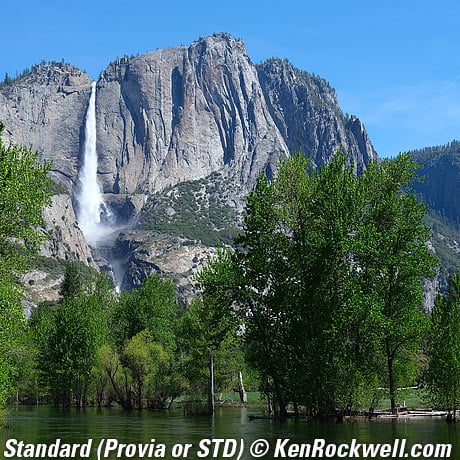 |
 |
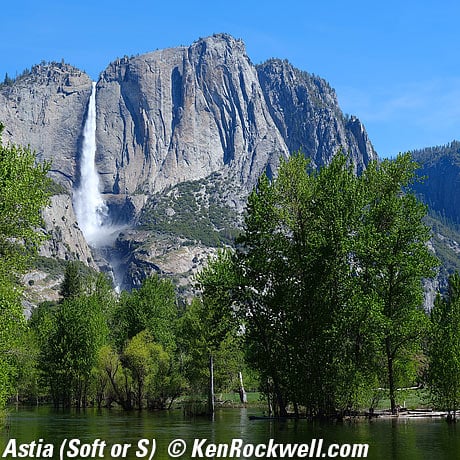 |
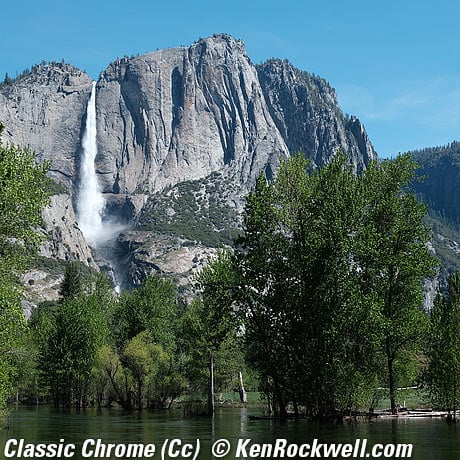 |
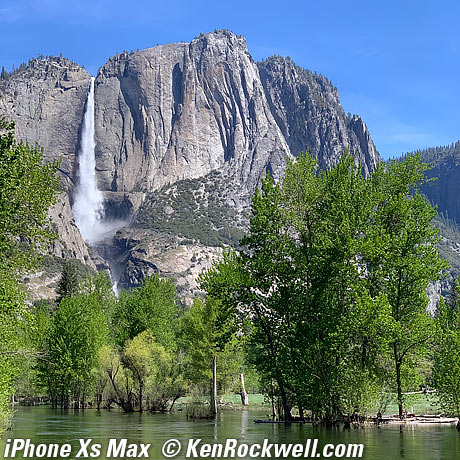 |
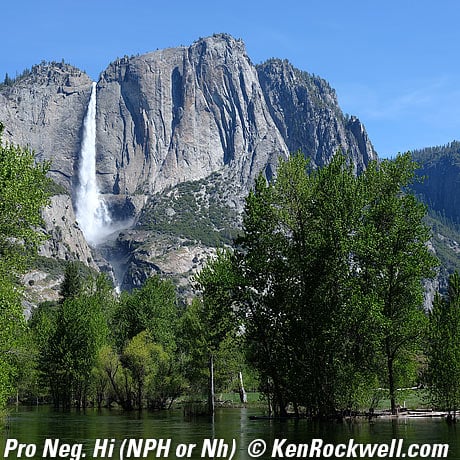 |
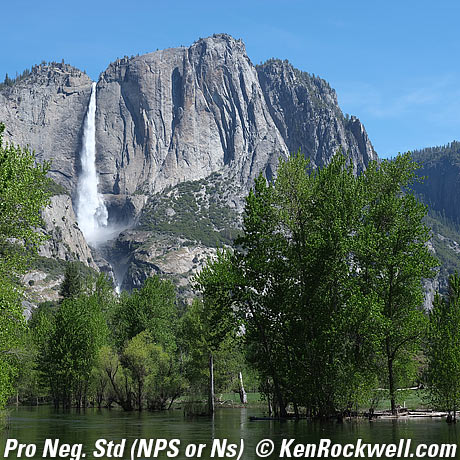 |
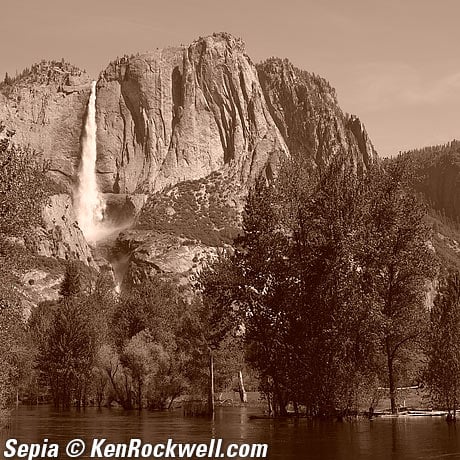 |
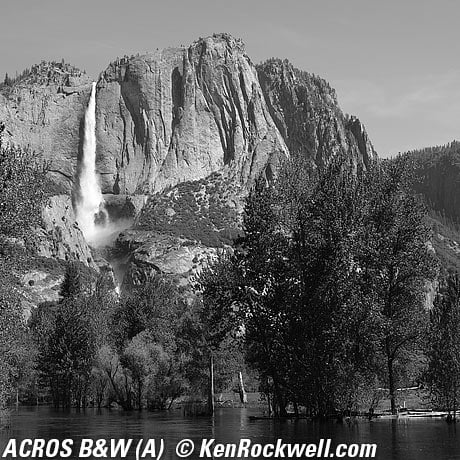 |
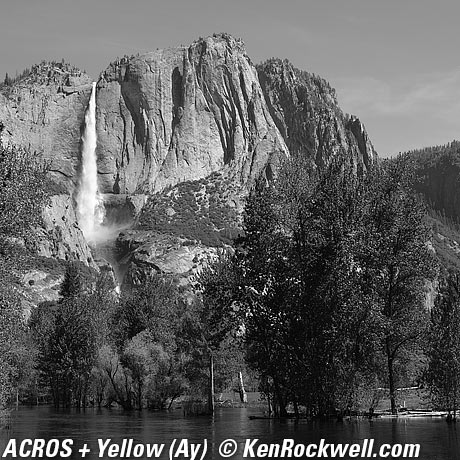 |
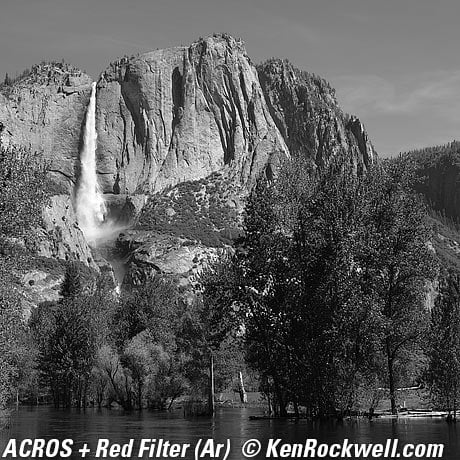 |
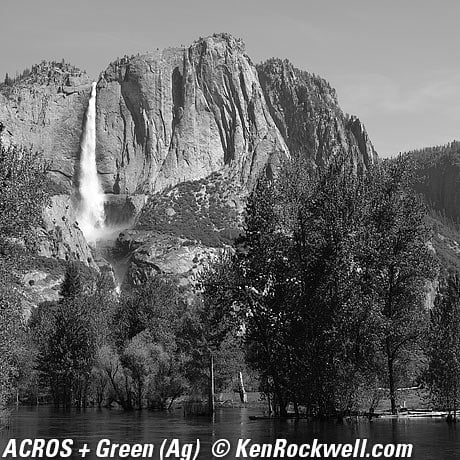 |
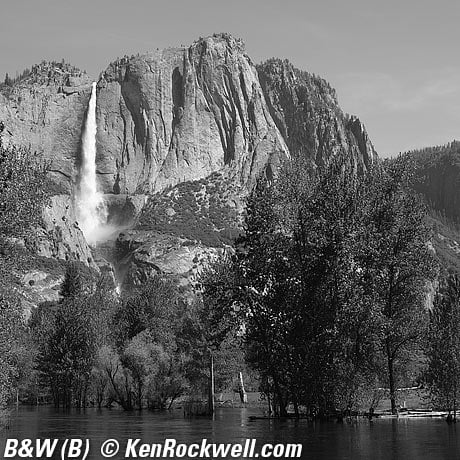 |
 |
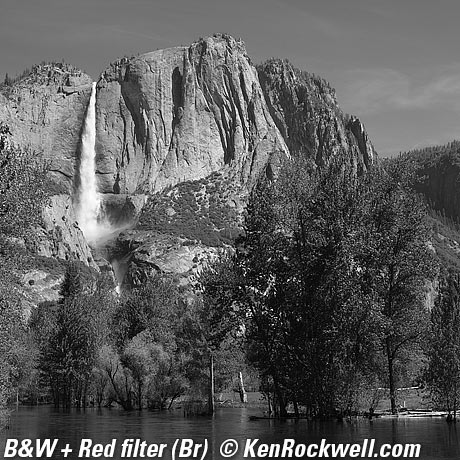 |
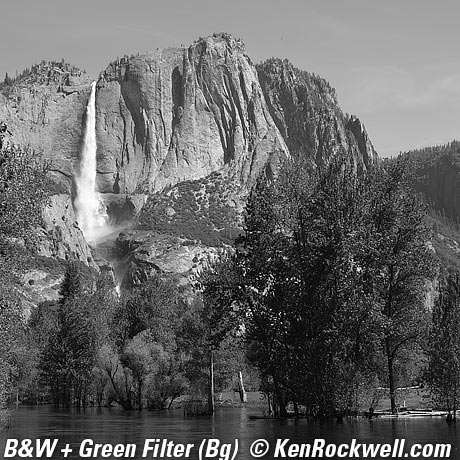 |
Click any for the camera-original © JPG file.
I shoot in the Standard mode. It's not exciting, but has everything (highlights, shadows and colors) in it so I can increase the saturation later.
The Velvia mode doesn't look at all like VELVIA 50. Instead, it looks like a bad scan from a Velvia slide. The blacks are crushed in this mode, blocking up to black and devoid of detail — like a bad scan and not at all like what we see on a light table or drum scan. I get better results shooting in STANDARD and increasing the saturation later, since this Velvia preset loses detail in the shadows.
Astia isn't bad - it's just like Standard.
Classic Chrome is awful, looking like a faded slide, and greenish like an old Kodachrome slide. I'd only use this as a special effect.
The iPhone Xs Max isn't a preset in the GFX 50R; it's an actual iPhone Xs Max shot I made to fill in the sixteenth spot in this grid for comparison. It looks better, holding the same highlights but with much better colors, bluer skies, more detailed shadows and much brighter and more detailed greens than the GFX 50R.
Pro Neg. Hi is a higher-contrast version of Pro Neg. Std.
Sepia is a special effect.
ACROS (A) is a brand of Fujifilm black-and-white film. This simulation simply has darker shadows than the regular B&W (B) simulations.
The Yellow filter, Red filter and Green filter simulations are simulating the look of B&W film shot with that color filter over the lens. Yellow darkens the sky (blue) a little and Red darkens it more. Green is similar to Yellow, but makes greens a little lighter.
Frame Rates
While rated to 3 FPS in electronic front-curtain shutter mode and 1.8 FPS for every other mode, my GFX 50R only runs at 1.6 FPS, which is more than enough for a portrait and landscape camera.
Use this camera for shooting things that hold still, it's not a sports or action camera.
Focus and exposure lock in continuous advance mode.
High ISO Performance
The GFX 50R's high ISO performance is superior to any full-frame or APS-C camera.
At normal image sizes as seen below image quality is unchanged from ISO 50 (L) up to ISO 25,600 (H)!
At ISO 51,200 the only degradation at normal image sizes is slightly less color saturation and a little mottling.
ISO 102,400 is a little mottled, and still perfectly usable at these reasonable sizes.
High ISO Image Sample Files
Complete Images
Click any for the camera-original © files to explore on your computer (mobile devices rarely show the full resolution files properly):
26 × 35" Prints
The GFX 50R is astonishing in that comparing 26 × 35" prints at reasonable viewing distances that there is no visible change in the image as the ISO goes from 100 on up to ISO 25,600 (H). Swapping all these prints around they are identical!
ISO 50 (L) has slightly higher contrast, otherwise they look the same up to ISO 25,600 (H). I've never seen any other camera which could make images that all matched across almost its entire range of ISOs.
At this size ISO 51,200 looks a bit mottled in the shadows, and ISO 102,400 is mottled everywhere, but man, up to ISO 25,600 it's simply crazy how good this is. Look at my files on a 4K monitor or print them and see for yourself.
Extreme 600 × 450 Pixel Crops from above
These 600 × 450 pixel crops will vary in size to fit your browser window.
If these crops are about 3" (7.5cm) wide on your screen, then the complete image printed at this same high magnification would be about 31 × 41" (2.6 × 3.4 feet or 79 × 105 cm).
If these crops are about 6" (15cm) wide on your screen, then the complete image printed at this same extreme magnification would be about 62 × 82.5" (5.2 × 6.9 feet or 1.6 × 2.1 meters).
If these crops are about 12" (30cm) wide on your screen, then the complete image printed at this same insane level of magnification would be about 124 × 165" (10.3 × 13.8 feet or 3.1 × 4.2 meters).
What's crazy is how well the GFX 50R holds detail at crazy-high ISOs, unlike full-frame cameras whose noise reduction makes every ISO above 100 softer and softer. Unlike any other camera I've ever tested, fine detail is strong at almost every high ISO.
Bravissimo, Fuji!
Click any for the camera-original © files:
Click any for the camera-original © files.
Lens Adapters
For people who prefer futzing over shooting, you can adapt any lens to the GFX and have a ball. I wouldn't bother with this because Fujinon's GF lenses are the best you can get optically for the GFX, and more importantly they integrate electronically with autofocus and aperture control. Lens adapters are rarely more than dumb metal tubes that require you to open and close your apertures manually.
Fujinon's G-mount lenses are the only lenses both optimized to the sensor and which also provide all of autofocus, EXIF data, Digital Lens Optimization and automatic aperture control.
Unlike film, all electronic image sensors all use arrays of microlenses, one per pixel, which effectively enlarge each of the light-sensitive areas. This is because each pixel is also surrounded by interconnections and borders, so these microlenses make the sensor look like it's all sensor to the light coming from the lens.
These microlenses make the sensors much more sensitive to light, however they do this expecting that the lens' rear nodal point (the point from which the light appears to come out of the back of the lens) is in a certain place. Unlike film, every electronic image sensor is quite particular about the position of this source of light, since its microlenses are optimized for it. In English, while film doesn't care at what angle it's struck by light, image sensors do very weird things if hit at angles other than those for which they are optimized. The image centers are always fine, but results get screwier as you get closer to the sides, and are usually worst with wider lenses.
Among the problems you'll see using lenses on adapters with digital cameras are softer sides and corners, and additional curvature-of-field effects which make these even worse. The wider the lens, the worse results you get adapting lenses to digital cameras as the angles of incidence at the sides are far more likely to be the wrong ones for any given camera and sensor.
Specifically, my ZEISS DISTAGON T✱ 50mm f/4 looks very soft at the sides and corners at larger apertures when used on the GFX 50R, while longer lenses like my ZEISS SONNAR 250mm f/5.6 work much better optically.
While you always can get "decent" results when stopped down, these iffy results aren't why you pay top dollar for a medium format camera. If you're a hobbyist, have fun, but if you're serious, forget about adapters, especially for the wider lenses.
For tilt and shift, try Fujifilm's View Camera Adapter G (or the more functional FotodioX Multi-Position Stitching Adapter that sells for half the price) that lets you attach this camera to the Graflok back of a 4 × 5" view or press camera. I don't know how well the combination works.
Fujifilm's Hasselblad Mount Adapter C adapts Hasselblad HC and HCD and Fujinon HC-mount lenses from the GX645AF to the GFX. You won't get autofocus, but you will get electronic aperture and in-lens shutter control (more about compatibility). I haven't tried it; these smaller-format lenses might — or might not — work better than my 6 × 6 cm Hasselblad film lenses do on the GFX 50R's 33 × 44mm sensor.
Random Chinese adapters let us attach any lens ever made, but the most interesting, like 35mm format ultrawide shift lenses like Canon's 17mm TS-E which ought to cover this sensor easily, are probably going to work very poorly in the corners.
Here's an interesting idea: try full-frame lenses shot in the GFX' square 33 × 33mm crop. It turns out that the diagonal of a 33 × 33mm square is 46.5mm, compared to 24 × 36mm's 43.3mm diagonal. In English, the GFX' square crop has a diagonal only 7.5% longer than full-frame, so you can try shooting 35mm format lenses and some may cover the square. Try an ultrawide like the Nikon 18mm f/4 AI or Canon's 17mm TS-E and you could get some crazy results. Just be sure to remove any hoods or filters from the lens to minimize vignetting with wide lenses.
Half the beauty of the GFX is how well it handles, and you lose all that if you adapt manual lenses to it. Go ahead and encumber yourself with your old Hasselblad lenses on adapters, but you'll thank me when you get real GF lenses and take the work out of shooting.
Be sure to press MENU > WRENCH > BUTTON/DIAL SETTING > SHOOT WITHOUT LENS > ON, otherwise the camera won't fire with most adapters.
Lens Corrections
Lens corrections are all put in a "LENS MODULATION OPTIMIZER" option set at MENU > I.Q. > Page 2/3 > LENS MODULATION OPTIMIZER.
I see no separate options for falloff, distortion, diffraction etc.; they're either all ON or all OFF.
Long Exposures
Inside a Barn, Yosemite National Park, 3:25 ~ 3:29 P.M., 09 May 2019. Fujifilm GFX 50R, Fujifilm GF 32-64mm at 32mm, f/16 for four minutes at ISO 100, Perfectly Clear v3.7. bigger or full-resolution or camera-original © JPG file.
Unique to the GFX 50R is that shutter speeds up to one full hour are just normal selections. In this case, a four-minute exposure is easy, and with the self-timer, no need for a remote release.
I leave Long Exposure NR ON (MENU > I.Q. > page 2 of 3 > LONG EXPOSURE NR > ON), which doesn't seem to take any extra time. Images look great at least up to eight minutes long, which is the longest I've tried.
Mechanical Quality
Fujifilm GFX 50R. bigger.
The GFX 50R is made better than most of not all mirrorless cameras, with lots of metal.
Unlike some of the Johnny-come-lately brands, the lens mounts are well made of the correct materials, so lenses feel great coming on and off. The mount feels smooth and precise, not loose and gritty like it does on some lesser brands.
Metal
Strap lugs, top cover, shutter speed dial, front control dial and shutter button, lens mount flange, rear cover, LCD panel flip linkage, camera bottom cover and tripod socket.
Plastic
All buttons & rear nubbin, power switch, rear control dial, LCD frame and cover, rear autofocus mode lever, bottom connector cover and battery door.
Rubber
Textured front grip.
Vegan leather
All leather-like covers.
Markings
Engraved (or die-cast) and filled with paint (top and front covers and both dials) and painted (rear cover and buttons).
Identity
Die-cast and filled with paint on front top cover.
Printed on sticker on back of LCD frame. You have to pull-out the LCD to look back at it.
Serial Number
Printed on a sticker glued on the back of LCD frame. You have to pull-out the LCD to look back at it.
Made in
Japan.
Sharpness
While its no more or less sharp than any other 50MP camera it its lowest ISO, the GFX 50R is sharper than any full-frame camera when you go to ISO 200 and above.
Bravo, Fujifilm!
Image Stabilization
The GFX 50R has no built-in stabilization, but it does work with the optical stabilizers in many of Fujinon's lenses.
"Percent Perfectly Sharp Shots" are the percentage of frames with 100% perfect tripod-equivalent sharpness I get when I'm shooting hand-held while standing with no support. Hand tremor is a random occurrence, so at marginal speeds some frames will be perfectly sharp while others will be in various stages of blur — all at the same shutter speed. This rates what percentage of shots are perfectly sharp, not how sharp all the frames are:
With Fujinon GF 100-200mm f/5.6 R LM OIS WR
| % Perfectly Sharp Shots at 100mm | 1 |
1/2 |
1/4 |
1/8 |
1/15 |
1/30 |
1/60 |
1/125 |
1/250 |
1/500 |
| Stabilization ON | 0 |
3 |
17 |
83 |
100 |
100 |
100 |
100 |
100 |
100 |
| Stabilization OFF | 0 |
0 |
0 |
0 |
0 |
5 |
67 |
100 |
100 |
100 |
| % Perfectly Sharp Shots at 200mm | 1 |
1/2 |
1/4 |
1/8 |
1/15 |
1/30 |
1/60 |
1/125 |
1/250 |
1/500 |
| Stabilization ON | 0 |
0 |
33 |
50 |
100 |
100 |
100 |
100 |
100 |
100 |
| Stabilization OFF | 0 |
0 |
0 |
0 |
0 |
0 |
5 |
50 |
100 |
100 |
As you can see the 100-200mm's stabilizer adds about three to four stops of real-world stabilization. Astounding is that I can shoot at 1/8 to 1/15 and get perfect tripod-equivalent sharpness almost all the time!
With Fujinon GF 32-64mm f/4 R LM WR
| % Perfectly Sharp Shots (no stabilization) | 1 |
1/2 |
1/4 |
1/8 |
1/15 |
1/30 |
1/60 |
1/125 |
1/250 |
1/500 |
| 32mm | 0 |
0 |
0 |
0 |
50 |
100 |
100 |
100 |
100 |
100 |
| 64mm | 0 |
0 |
0 |
0 |
30 |
40 |
83 |
100 |
100 |
100 |
Rear LCD Monitor
Fujifilm GFX 50R. bigger.
The small rear LCD has no automatic brightness control, so it's dim in daylight unless you turn it up manually.
It swivels up and down, but can't swivel to the left or right and certainly can't twist 180º for self-portraits.
Playback
While images swap from one to another instantly, they first display as a slightly fuzzy preview for a half a second before popping-in sharp a moment later.
It also always takes a half second as you swap images for the exposure data to pop in.
Very oddly one can only flip the nubbin up to change to a different kind of page view (picture only, picture with data, detailed data, etc.), flipping down is simply ignored.
"Autorotate Playback" (MENU > WRENCH > SCREEN SET-UP (page 2/3) > AUTOROTATE PB) isn't; it just rotates vertical shots that then take up only half of the screen. The GFX 50R isn't as smart as an iPhone and won't rotate playback images as you rotate the camera.
It takes too long for my taste scrolling around a zoomed image.
On playback you can get to 200% magnification, enough to see JPG artifacts!
Data
Sadly cards are not properly titled. Both cards are titled as "Untitled,” making them easy to confuse in your computer's finder when trying to figure out what is what. They should be titled something like "GFX-50R," but they aren't.
There is no Basic JPG option as I'd prefer; only NORMAL, FINE and SUPER FINE.
NORMAL LARGE JPGS are about 9~13 MB, and FINE LARGE JPGs are about 20 MB, all varying with subject detail.
NORMAL SMALL JPGS are about 2~3 MB, all varying with subject detail.
Power & Battery
This is a bigger camera, and has a bigger battery.
While only rated 400 shots like small cameras, we just don't shoot anywhere as many frames with medium format so I can shoot all day and still have half a charge left on just one battery.
I get about 300 shots per charge, and that's 300 very fiddly tripod-mounted shots where I spend a lot of time looking and setting but not shooting many shots. Even with 300 shots per charge I only use half a battery per long day of landscape shooting, so this is excellent
Battery Percentage Indicator
There is a percentage indication, but it is very well hidden.
The only way to see it is only on the rear LCD, only when the camera is ready to shoot (not on playback and not in menus), and only in the one data screen that comes up as you press DISP BACK to change the screen functions.
If you can get the percentage to display, it will be in the top right of that screen.
Clock Accuracy
Every sample is different, but mine is really bad. My GFX 50R gains nearly two seconds a day or nearly a minute a month (actually 1¾ seconds per day or 52 seconds per month). This means it can be five or six minutes fast each time we set our clocks behind for standard time. Hopefully your sample will be better; I have 50-year-old mechanical watches more accurate than this.
This matters when you shoot multiple cameras (or this camera and an iPhone) and then sort all the images based on capture time to compare the similar views of each scene.
Compared
Top Sample Images Intro Specifications
Accessories Performance Compared
User's Guide Recommendations More
I'd get my GFX-50R at Amazon, used at eBay (if you know How to Win at eBay), or used at B&H.)
Versus Fujifilm
See All Fujifilm Cameras Compared.
Versus the World
Fujifilm's colors are highly optimized for people and flesh tones, with mild colors and low contrasts. Fujifilm sets the world standard for flesh tones, always giving great results regardless of nationality or lighting quality.
If you're a people, fashion, event or portrait photographer, take a hard look at the Fujifilm cameras. They, by a large margin, make the best-looking people shots under any and all conditions. Unless you're always in the studio with controlled lighting, I've always been astounded at how great my Fujifilm camera images of people look under any kind of practical and mixed artificial light. With Fujifilm digital cameras I always get great-looking people shots where every other brand of camera might send me back to having to tweak the colors manually to get saleable results under crummy lighting.
As far as in-camera JPGs are concerned (I've been shooting for over 50 years and know what I'm doing so I have no need to fiddle with raw), the colors are too sedate for me for nature and landscape work. When I use a Fujifilm camera for things other than people I always have to amp-up the saturation later, and the results aren't as good as what I get in-camera from Nikon, Canon or Sony.
If you shoot raw then your colors aren't created until you render the files in your computer and you probably can get anything you want depending on your choice of software — but I need images I can sell right out of the camera as JPGs because I need to be on to the next job immediately.
Versus Full-Frame
NEW: Medium-Format vs. Full-Frame Image-Quality Comparison!!!
The GFX 50R has far better high ISO performance than any full-frame camera, by about a four-stop margin!
Versus APS-C
The Fujifilm GFX 50R looks, handles and shoots just like Fujifilm's APS-C cameras — just with medium-format results.
If you're familiar with Fujifilm's APS-C cameras, just multiply every linear dimension by about 27% and you've got the picture. The GFX 50R is an X-E3 that grew up.
Versus 35mm SLRs
The excellent and popular Fujifilm GF 32-64mm f/4 just happens to be the equivalent of a 25-50mm lens on full-frame. While this seems like a weird range, Nikon's widest professional zoom came in exactly this range from 1979~1985!
Here's the GFX 50R and Fujifilm GF 32-64mm f/4 (25-50mm full-frame equivalent) and a classic 35mm SLR, the ultimate professional Nikon F2AS with the Nikon NIKKOR 25-50mm f/4 AI lens:
Fujifilm GFX 50R with Fujifilm GF 32-64mm f/4 (25-50mm eq.) and Nikon F2AS with 25-50mm f/4 AI. bigger.
User's Guide
Top Sample Images Intro Specifications
Accessories Performance Compared
User's Guide Recommendations More
I'd get my GFX-50R at Amazon, used at eBay (if you know How to Win at eBay), or used at B&H.)
See also Fujifilm's own GFX 50R owner's manual.
Strap and Clips
Forget Fujifilm's cockamamie split rings and oddball tools you need to attach them.
I use LEICA's brilliant original 14312 strap (the same one included with their immortal $8,000 cameras) which attaches immediately without needing any tools and doesn't need any guards or fiddling to avoid damaging your finish.
LEICA's strap is also ultra-comfortable and feels just right.
Charging
Use the included external charger. Be sure to attach the correct AC plug for your country; don't take your new camera on a vacation before you're sure you've attached the right plug.
Power
Just leave the camera ON as you run around. It turns off automatically if you hold the shutter for a moment.
Menus
You can't hit MENU again to get out of the menus to shoot, tap the shutter or hit the BACK (not MENU) button.
Front Command Dial
The front command dial is the knurled metal ring around the shutter button!
It feels really nice.
Lock Buttons
The lock button in the center of the shutter speed dial is weird: you push it once (down) to lock the dial, and then push it again (up) to unlock the dial. You have to press it at least twice to unlock, change a setting, and relock.
You can't just press and hold them to move the dial. Sorry.
Exposure Modes
Fujifilm does this much better than other cameras. There is no need for an exposure mode switch or button; all you do is set either of the lens aperture ring and/or shutter speed dial to A and then the camera sets that automatically (set shutter to A for aperture-priority or aperture ring to A for shutter-priority).
If you want Program mode, set both to A. Easy!
Autofocus
The MF/AF-C/AF-S switch, marked "S C M," is on the top back of the camera.
It's not on your lens, not on the front as on Fuji's APS-C cameras or in the menus. Hallelujah!
You have to enable face detection manually by selecting "S" on the front AF mode switch and then press MENU > AF/MF (page 2 of 3) > FACE/EYE DETECTION SETTING > FACE ON/EYE AUTO. The default is off.
EYE AUTO only works in AF-S. Eye detection doesn't work with continuous autofocus (AF-C), so your only menu option becomes FACE ON/EYE OFF. Set the camera to AF-S to set FACE ON/EYE AUTO, and it will revert to FACE ON/EYE OFF when in AF-C.
Autofocus tracking in AF-C doesn't track once you press the shutter; any sequences are made at the same focus and exposure.
Silent Shutter
The silent shutter works great with no restrictions on shutter speeds, but it only works from ISO 100 ~ 12,800 and Auto ISO.
It's a rolling shutter, so be careful if you're trying to stop action with it or working under flickering light.
It takes a long time to read the entire sensor which gives a long rolling shutter effect. This means any camera or subject motion can make some parts of the image blurry and others sharp (depending on when the camera or subject moved), and can change the shape or bend the subject if the camera or subject moves.
It won't work with flash, either.
Self Timer
The Self Timer cancels as soon as the camera goes to sleep, or if you turn off the power.
If you want it to stay as you've set it when the camera sleeps, press MENU > CAMERA ICON > SAVE SELFF-TIMER SETTING > ON.
This is set to OFF by default so your self timer wont be on the next time you use the camera, but as I usually shoot on a tripod and use it for every shot I prefer it stay set.
Flash
If you have the silent electronic shutter activated (or possibly in other modes as well), the flash simply won't turn on — its menu and icon simply stays gray and doesn't warn why.
The camera won't tell you what's wrong when this happens; it simply expects you to guess what you need to change so any kind of flash can work.
Sorry.
White Balance
Auto white balance works well, except on grass in shade where it often comes out too magenta. No worries, you'll see this in the finder, so set it manually using the Kelvin or other manual settings.
There is no Cloudy setting, just Sunny and Shade. The Shade setting uses a cloud and sun icon instead of a house casting a shadow.
Kelvin settings only have 31 discrete steps from 2,500K to 10,000K, so you can't set an exact value and probably won't get exactly what you want. If this is the case, flick the nubbin to the right and you can fine-tune each for slightly warmer or cooler.
If all else fails, set a custom white balance. Select any of the three custom icons (an old TV screen above two ramps with a 1, 2 or 3), and press the shutter with a neutral gray or white object filling the screen. Easy!
Color Modes & Film Simulations
I shoot everything at STANDARD film simulation and JPG NORMAL. I set COLOR to +4 (MENU > I.Q. > page 2 of 3 > COLOR > +4 or use the Q screen), and that's it.
I use Photoshop CS6 and the Perfectly Clear v.3.7 plugin to amplify the colors of my JPGs to where I need them for publication.
Shadow and Highlight Tone Settings
This lets us set how dark or light these appear. Setting them to -2 makes highlights darker and shadows lighter.
Set these at MENU > I.Q. > page 2 of 3 > HIGHLIGHT TONE or SHADOW TONE >, or use the Q screen.
If you want more details in dark shadows, then set SHADOW TONE to -2, which lightens them.
For more highlight detail, set HIGHLIGHT TONE to -2, but only if you've set DYNAMIC RANGE to 400% first (MENU > I.Q. > page 1 of 3 > DYNAMIC RANGE > or use the Q screen) and it didn't get you what you need.
Long Exposure Noise Reduction
Long Exposure Noise Reduction doesn't take any extra time. When I make an eight-minute exposure, all it takes is eight minutes, so I'd leave it ON at MENU > I.Q. > page 2 of 3 > LONG EXPOSURE NR > ON.
Lens Adapters
Be sure to press MENU > WRENCH > BUTTON/DIAL SETTING > SHOOT WITHOUT LENS > ON, otherwise the camera won't fire with most adapters.
See also Lens Adapters.
Dual Cards
I use both cards in Backup mode (the same thing is recorded to two cards at the same time).
A design flaw is that in Backup mode if either card fills, has an error or you just forgot to put it back in the slot, the camera locks-up until you put a good card in both slots.
Sadly even if you enable the "shoot without card" option, if you don't have two good cards in Backup mode, you're dead, which sorts of defeats part of the purpose of backup mode.
Live Color RGB Histograms as you shoot
You can see live color RGB histograms before you press the shutter (something neither Sony nor Nikon can do except in playback when it's too late), but you have to activate this in the menu system (MENU > WRENCH > BUTTON/DIAL SETTING > FUNCTION (Fn) SETTING > Fn 4 (or your choice) > HISTOGRAM) and then press that button to see it.
Oddly it ignores any change in the exposure compensation setting while the histogram is displayed. You have to tap the shutter, change the exposure, and tap the button again to see the new histogram. Weird defect.
Rear LED
The LED on the back does many things.
Green means it's processing data and orange means the shutter is open during a time exposure. You can read the rest at Fujifilm's own GFX 50R owner's manual if you're interested.
ISO 50 (L)
Don't be afraid of the lowest ISO. If you're on a tripod, using it gives you the sharpest and cleanest image you can get.
While armchair shooters may worry about "reduced highlight dynamic range," what this means is that it has more highlight contrast which can improve things shot under soft light.
2-Axis Level Display
To get a 2-axis level display you either wipe down from the top of the LCD by default, or better, assign this to your choice of button (MENU > WRENCH > BUTTON/DIAL SETTING > FUNCTION (Fn) SETTING > Fn 4 (or your choice) > ELECTRONIC LEVEL) and then press that button to see it.
Battery Percentage
There is usually an icon, but numeric battery percentage is hidden; it only shows up on some of the data fields on playback or shooting, and then usually only if you've enabled it in the menu systems.
24 × 36mm Crop
This is hidden; you won't see it offered along with all the other crop options.
To get this crop you first have to assign it to a Fn button (MENU > WRENCH > BUTTON/DIAL SETTING > FUNCTION (Fn) SETTING > Fn 4 (or your choice) > 35mm FORMAT MODE) and then pressing that button will go in and out of the 35mm crop mode.
You won't see that much difference as you go in and out of the 35mm crop mode because there isn't much difference between the 24 × 36mm crop and the 33 × 44mm sensor. The most obvious difference are the small additional black bars along top and bottom for the skinnier 3:2 aspect ratio of 24 × 36mm compared to the squarer 4:3 aspect ratio of the sensor.
Recommendations
Top Sample Images Intro Specifications
Accessories Performance Compared
User's Guide Recommendations More
I'd get my GFX-50R at Amazon, used at eBay (if you know How to Win at eBay), or used at B&H.)
Medium format digital used to be weird. Weird cameras, weird brands, flaky companies making kludgy products that worked funny trying to shame you into buying them with prices the same as a brand-new Mercedes and limitless sample photos of models wearing dopey outfits.
That's all changed with the GFX 50R. The GFX 50R looks, feels, handles and shoots exactly like any other real camera, and sells for less and weighs only half as much as lower image quality full-frame cameras like Nikon's D5 and Canon's 1DX Mk II. No full frame camera matches the GFX 50R's high-ISO, noise and resolution performance at any price.
Especially if you photograph people, the GFX 50R is worth a very serious look. It weighs less than full-frame DSLRs and about the same as full-frame mirrorless, and way outperforms them technically.
I carry my GFX 50R, GF 32-64mm f/4, GF 100-200mm OIS and plenty of accessories in my Think Tank Retrospective 7 bag. It's the perfect size, with enough room for a third lens or flash.
The GFX 50R is for people who know when to press the shutter. If you need more than 1.6 FPS, you'll want a different camera.
I'd get my GFX-50R at Amazon, used at eBay (if you know How to Win at eBay), or used at B&H.)
Lens Suggestions
You never need more than a few lenses, and Fujinon already makes what we need. The Fujifilm GF 32-64mm f/4 (25-50mm equivalent) and stabilized GF 100-200mm OIS (80-160mm equivalent) should cover you for everything. Add the GF 23mm f/4 R WR (18mm equivalent) if you need an ultrawide.
Lenses on adapters rarely work as well as you'd think. The results are rarely as good as you deserve for a medium format camera because electronic image sensors are much pickier about lenses than film, which never cared.
This 100% all-content website's biggest source of support is when you use those or any of these links to approved sources when you get anything, regardless of the country in which you live. Fujifilm does not seal its boxes, so never buy at retail or any other source not on my personally approved list since you'll have no way of knowing if you're missing accessories, getting a defective, damaged, returned, non-USA, store demo or used camera. I use the stores I do because they ship from secure remote warehouses where no one gets to touch your new camera before you do. Buy only from the approved sources I use myself for the best prices, service, return policies and selection.
Thanks for helping me help you!
Ken.
More Information
Top Sample Images Intro Specifications
Accessories Performance Compared
User's Guide Recommendations More
I'd get my GFX-50R at Amazon, used at eBay (if you know How to Win at eBay), or used at B&H.)
Fujifilm's GFX 50R owner's manual.
© Ken Rockwell. All rights reserved. Tous droits réservés. Alle Rechte vorbehalten.
Help Me Help You
I support my growing family through this website, as crazy as it might seem.
The biggest help is when you use any of these links when you get anything. It costs you nothing, and is this site's, and thus my family's, biggest source of support. These places always have the best prices and service, which is why I've used them since before this website existed. I recommend them all personally.
If you find this page as helpful as a book you might have had to buy or a workshop you may have had to take, feel free to help me continue helping everyone.
If you've gotten your gear through one of my links or helped otherwise, you're family. It's great people like you who allow me to keep adding to this site full-time. Thanks!
If you haven't helped yet, please do, and consider helping me with a gift of $5.00.
As this page is copyrighted and formally registered, it is unlawful to make copies, especially in the form of printouts for personal use. If you wish to make a printout for personal use, you are granted one-time permission only if you PayPal me $5.00 per printout or part thereof. Thank you!
Thanks for reading!
Ken.
